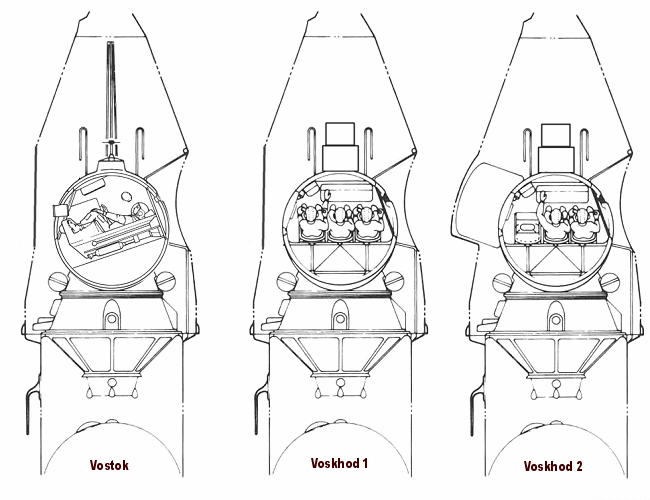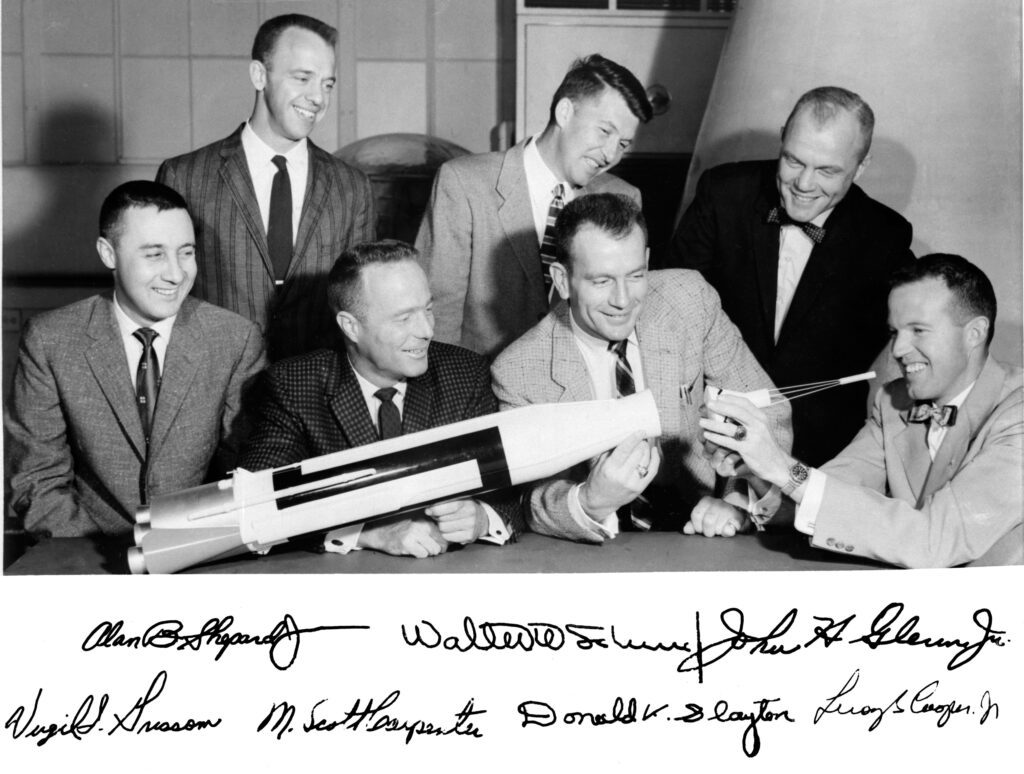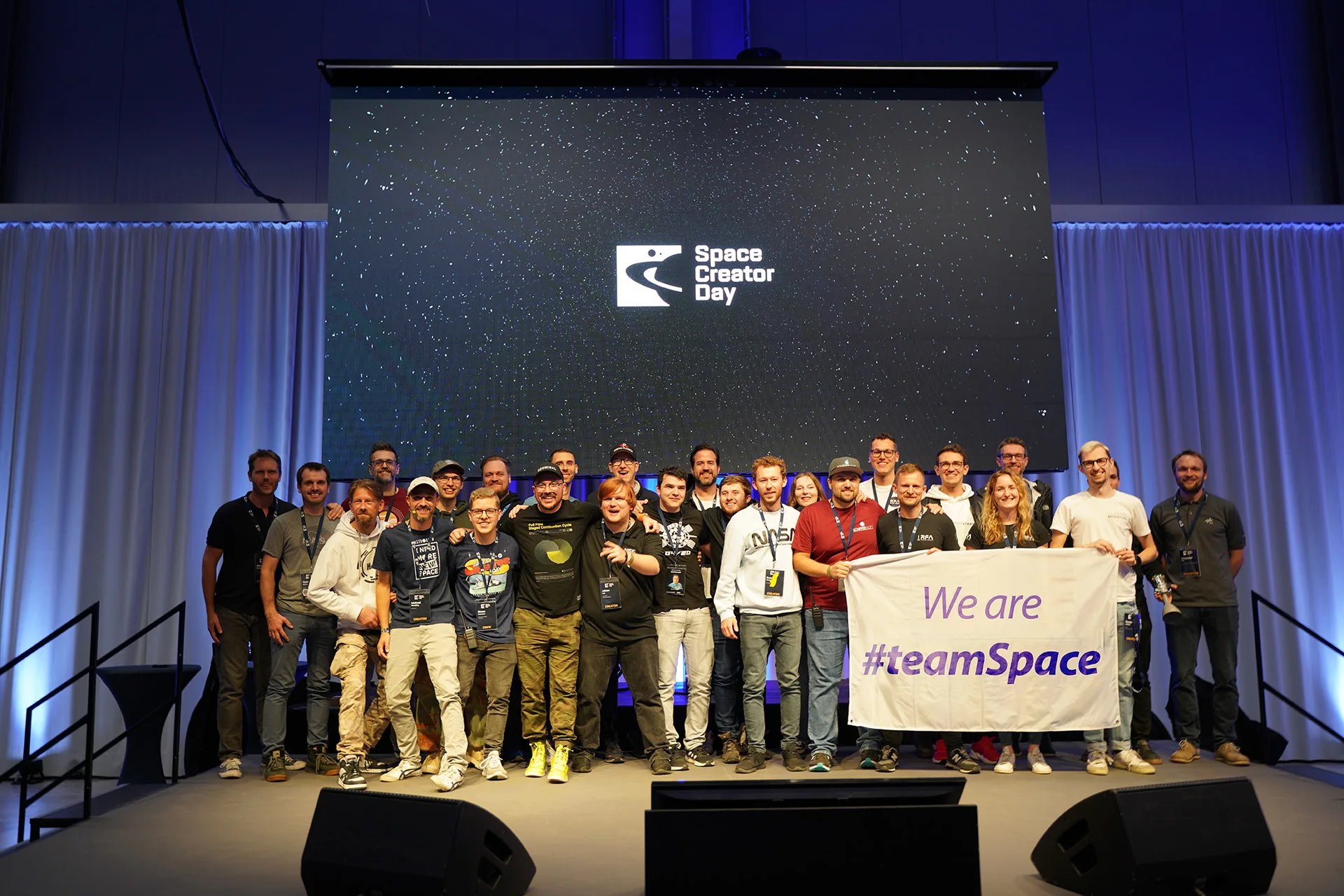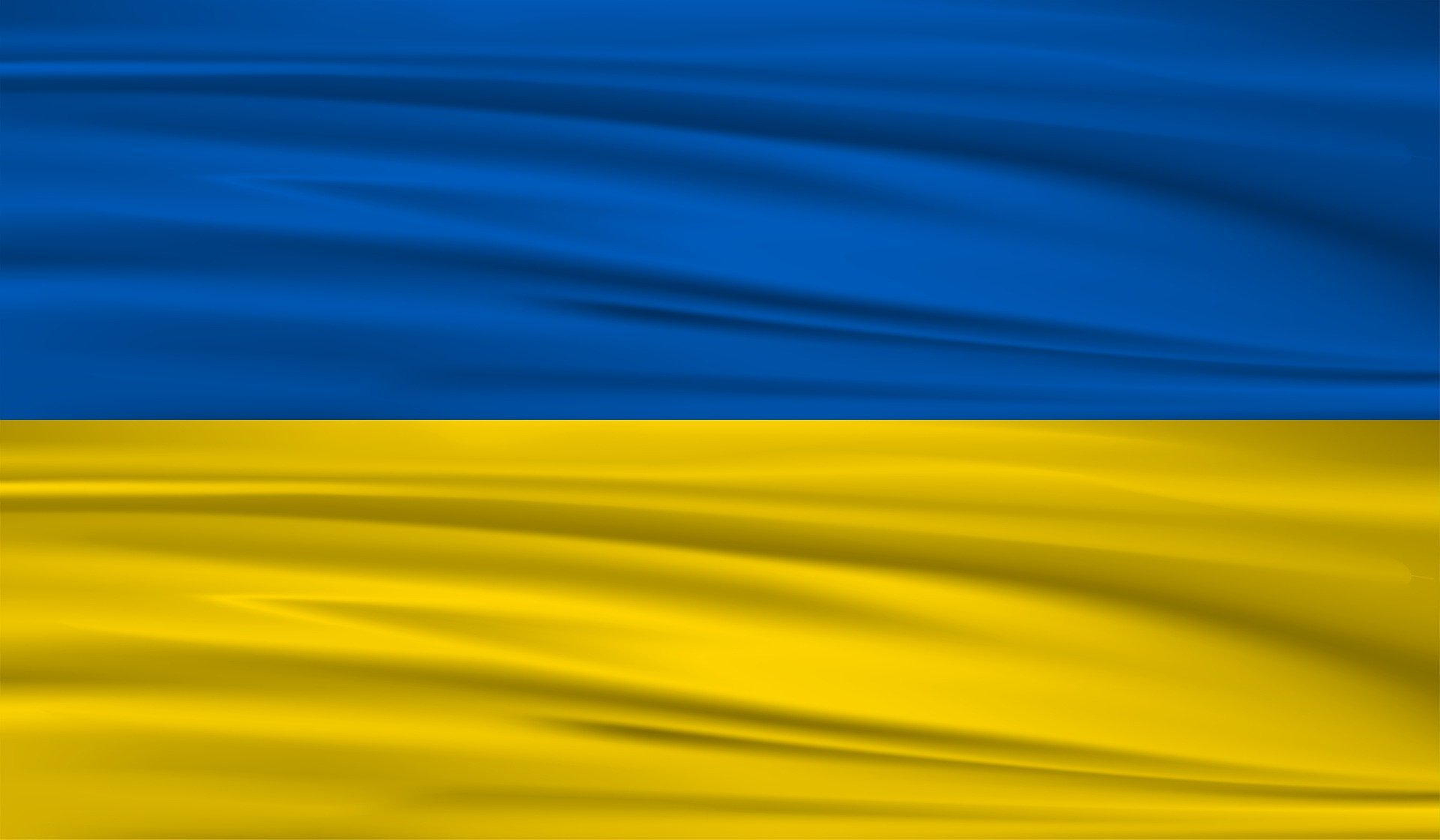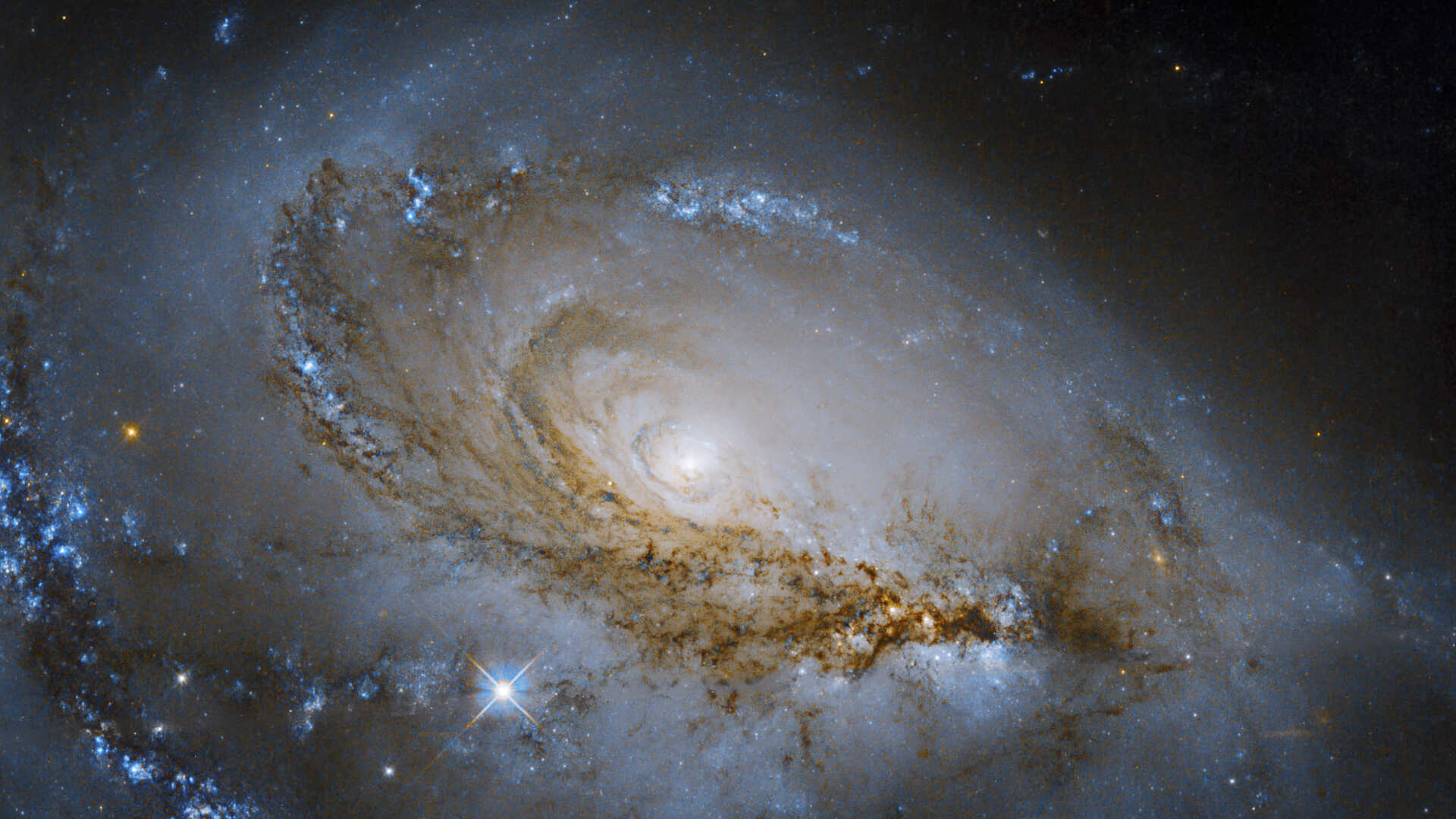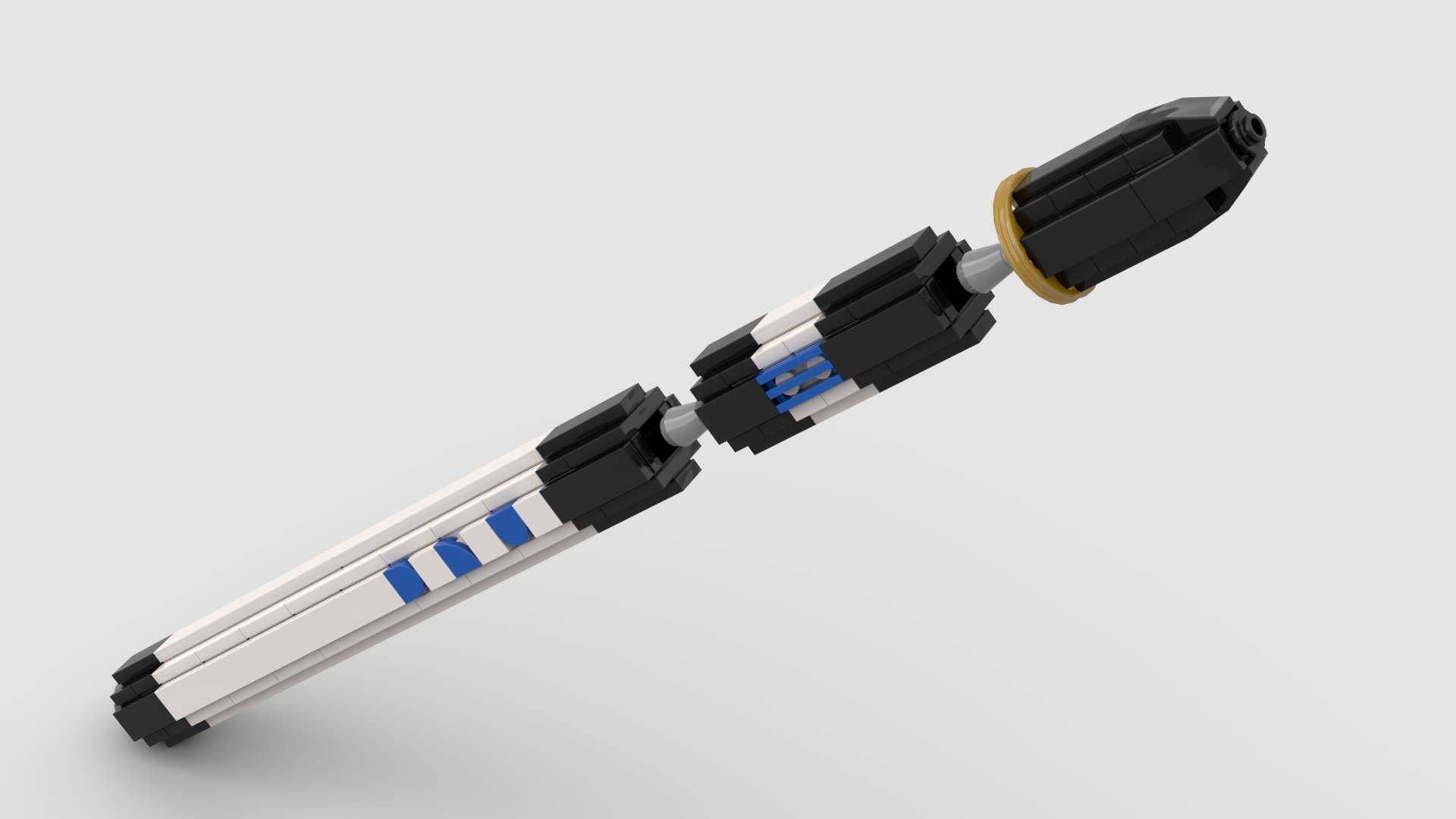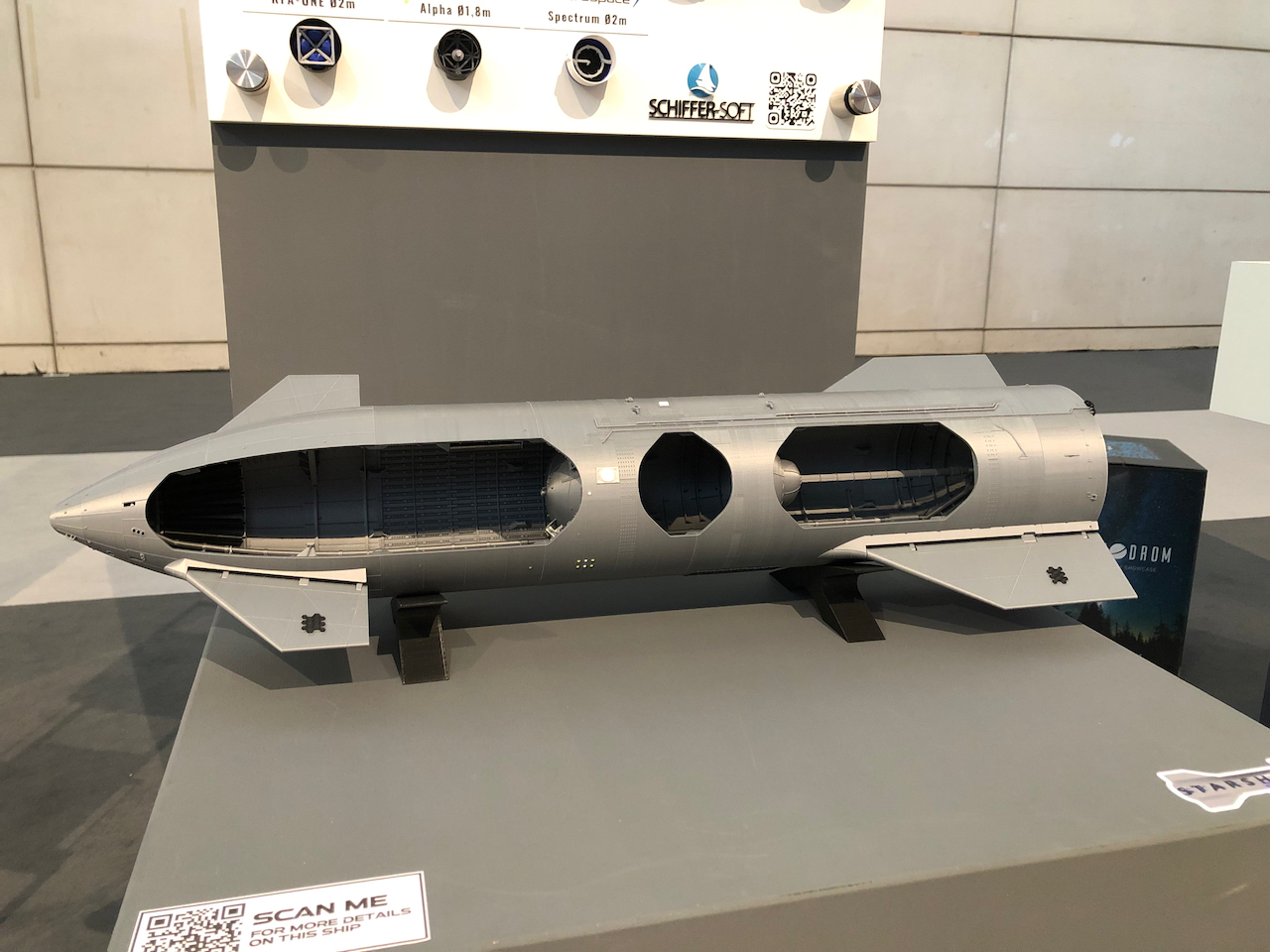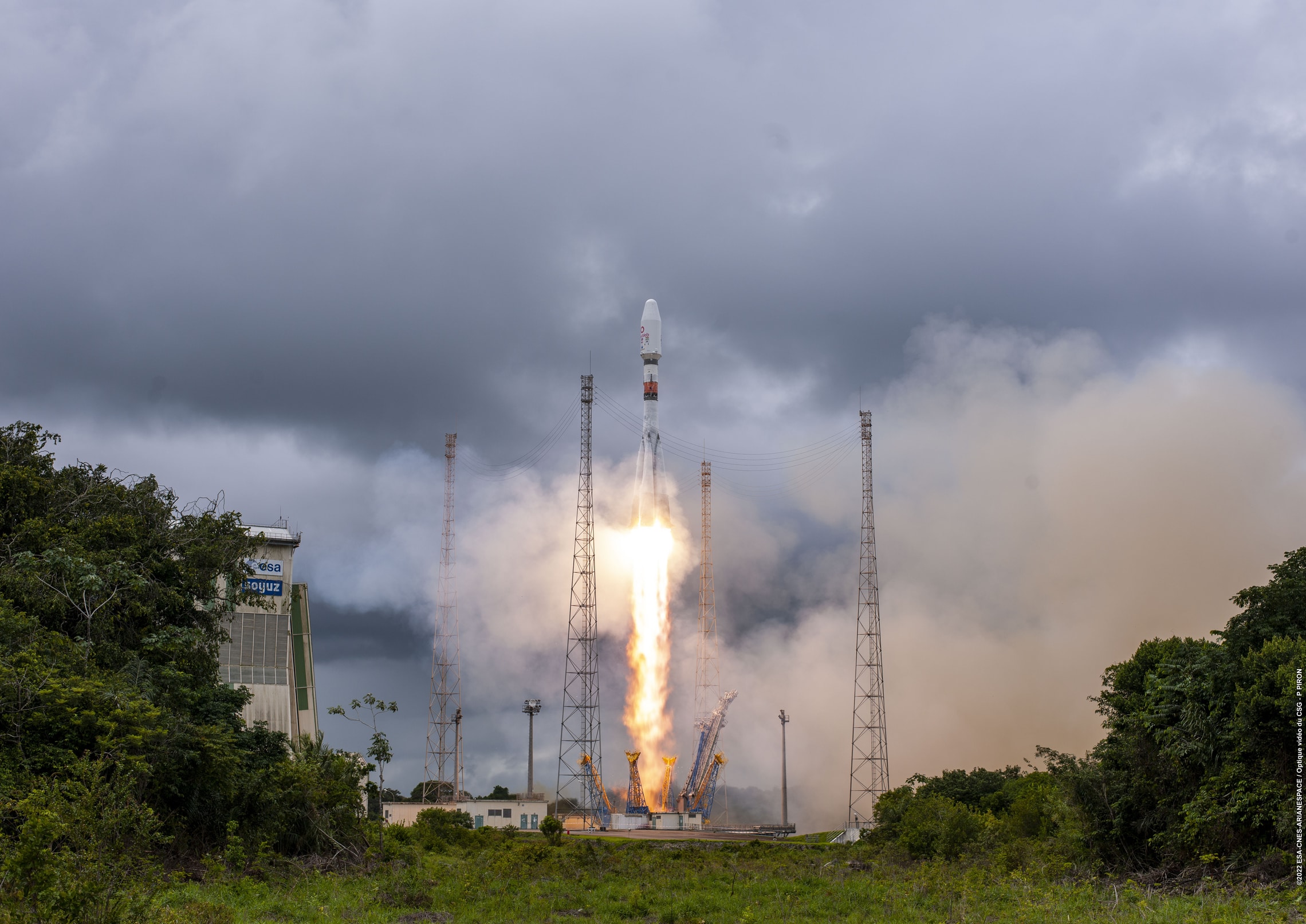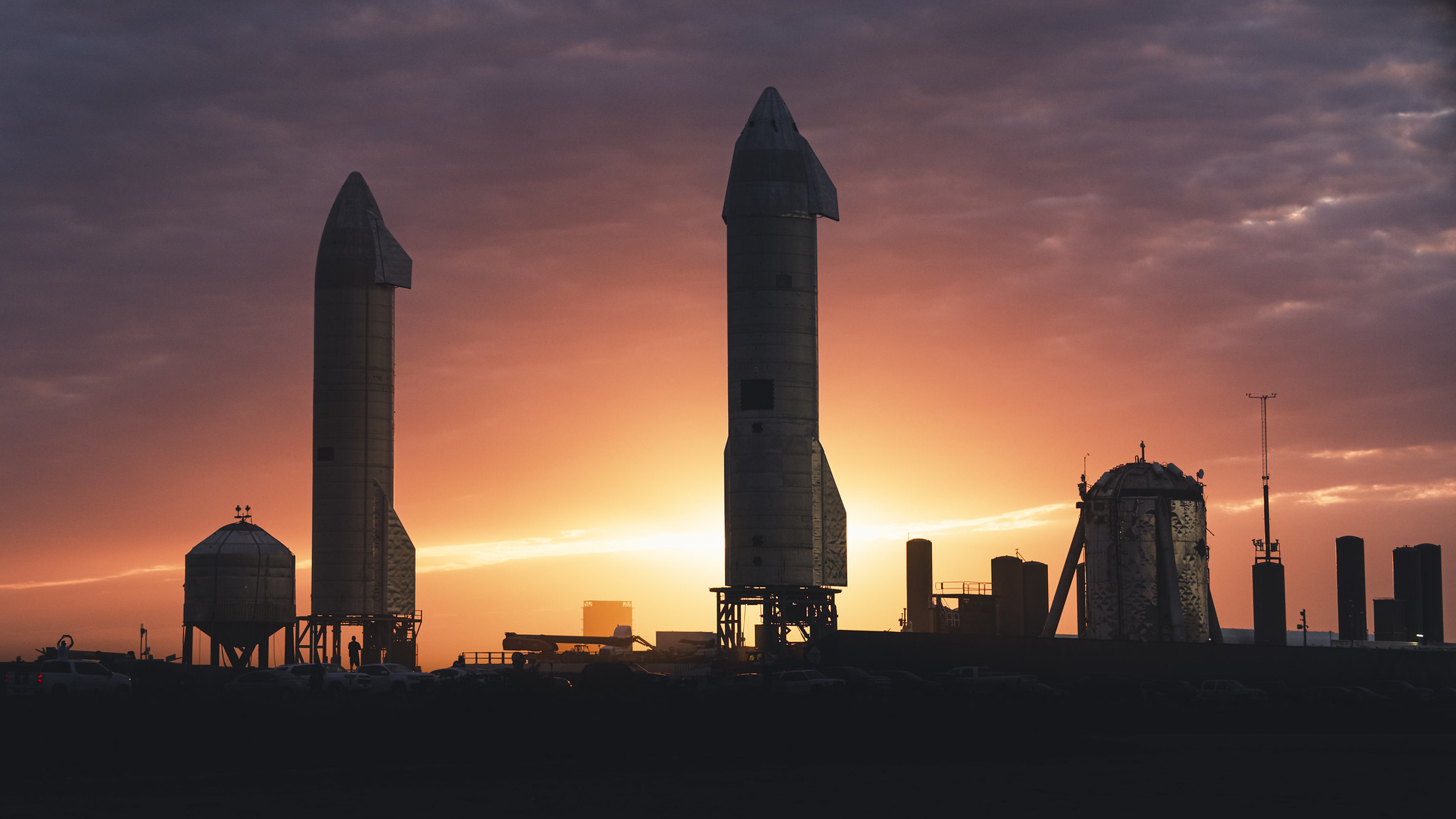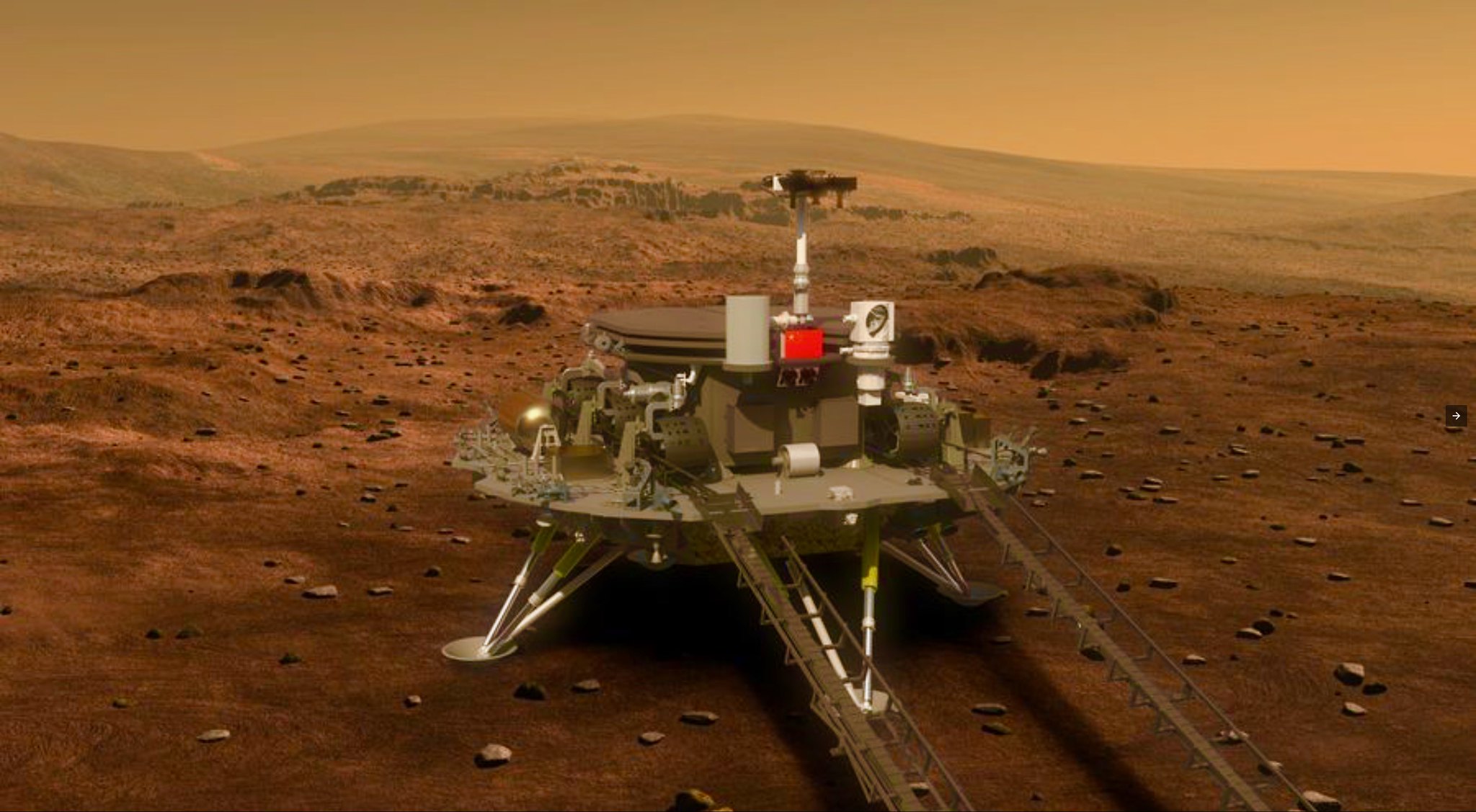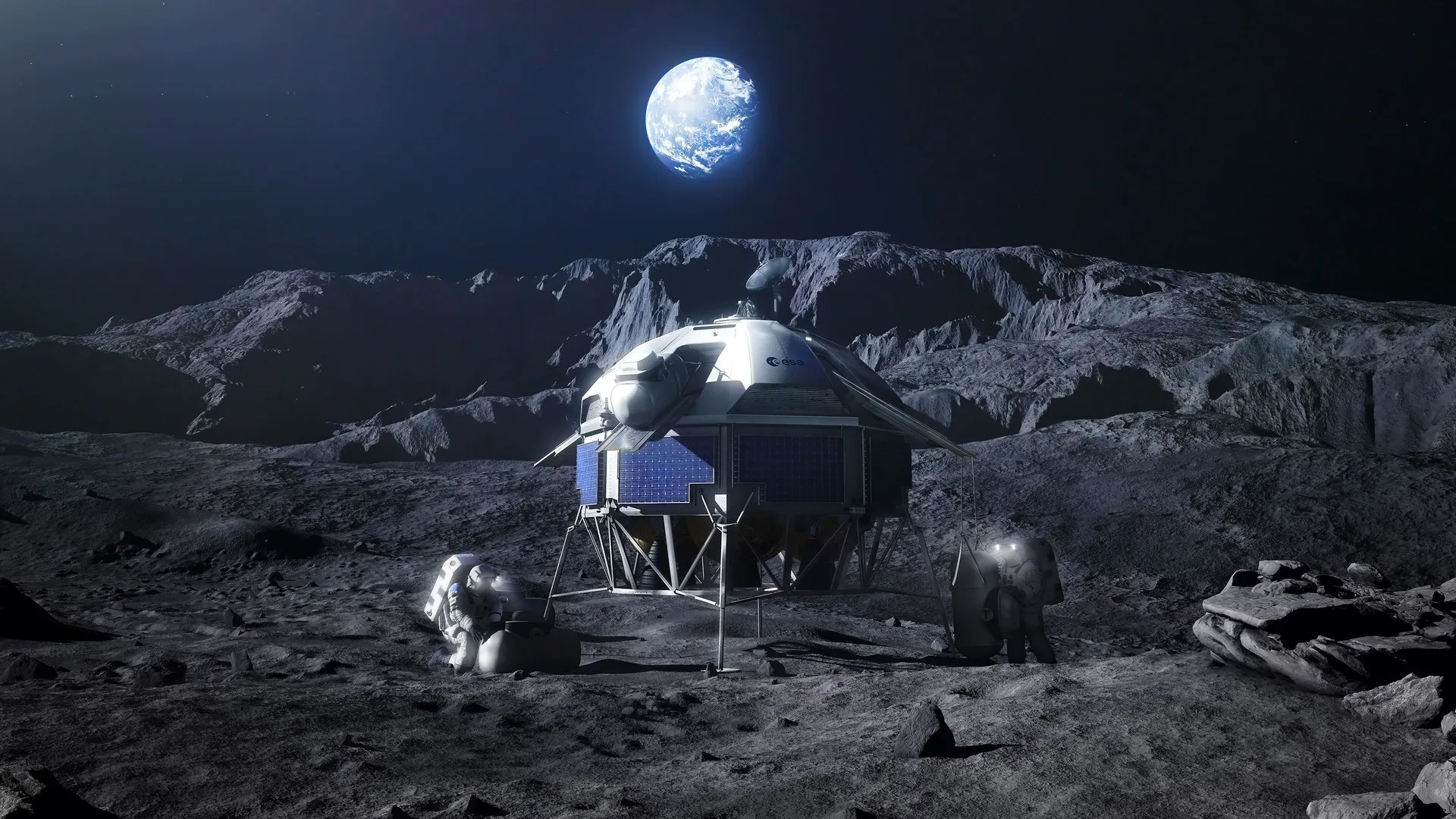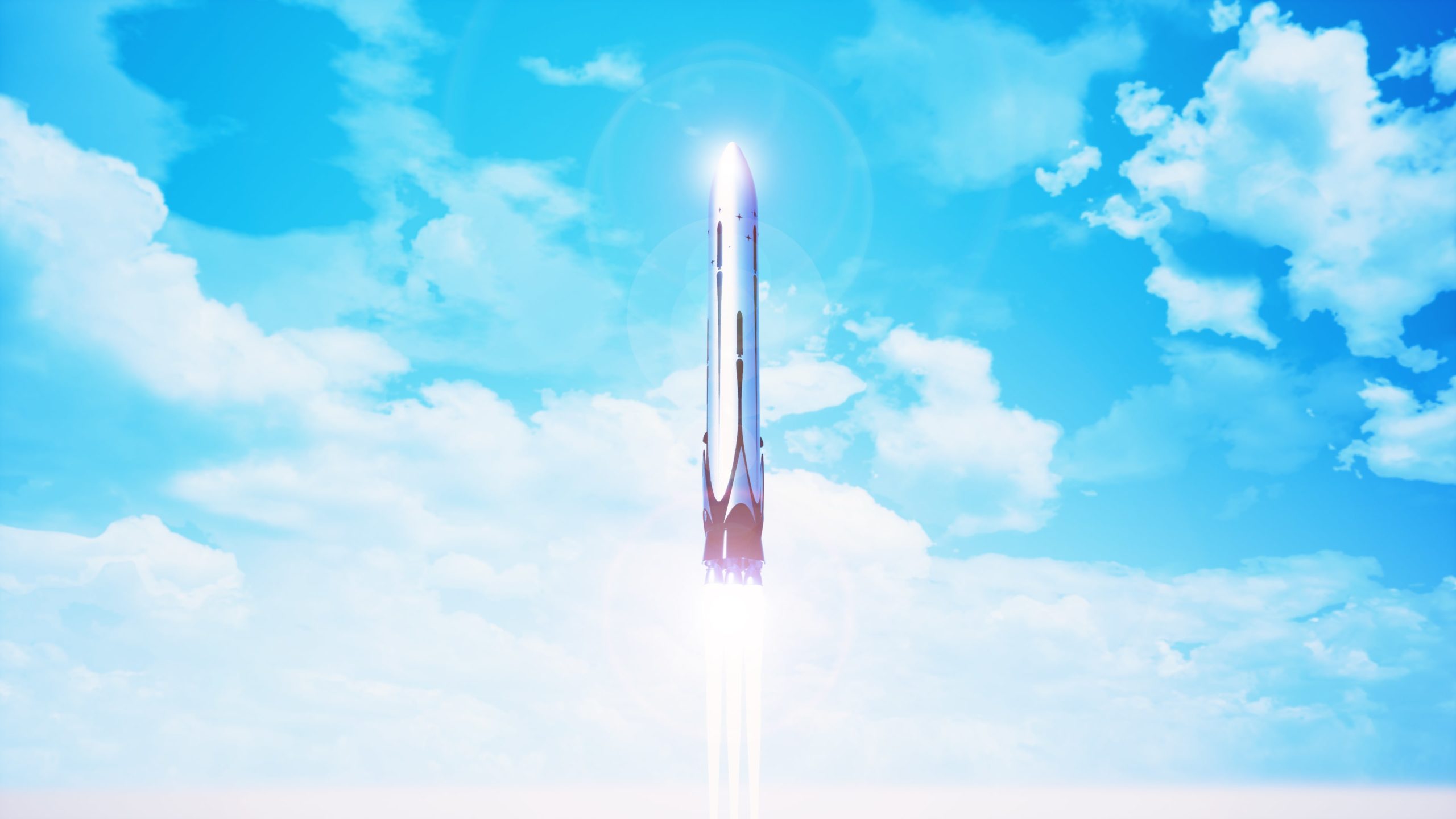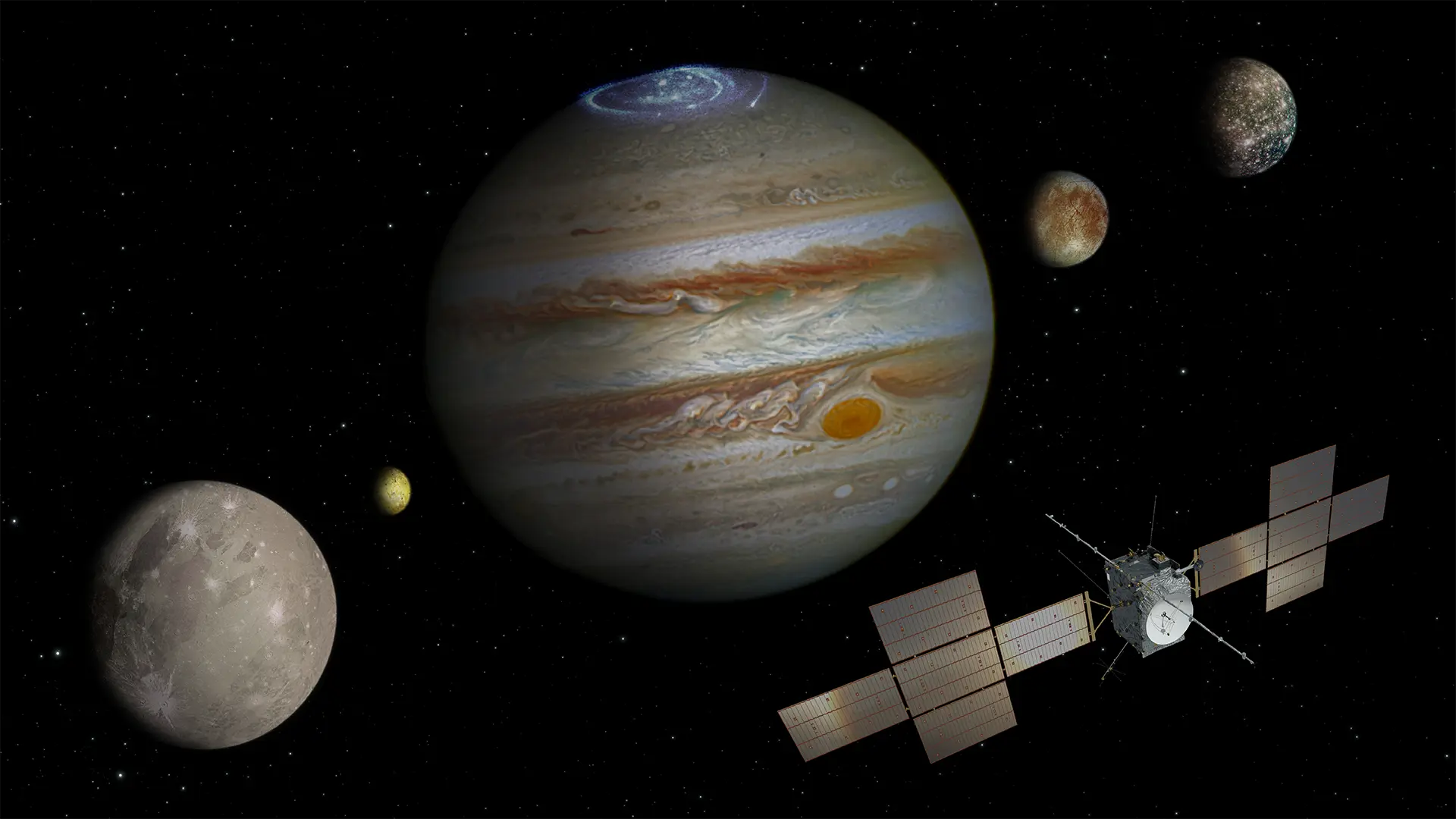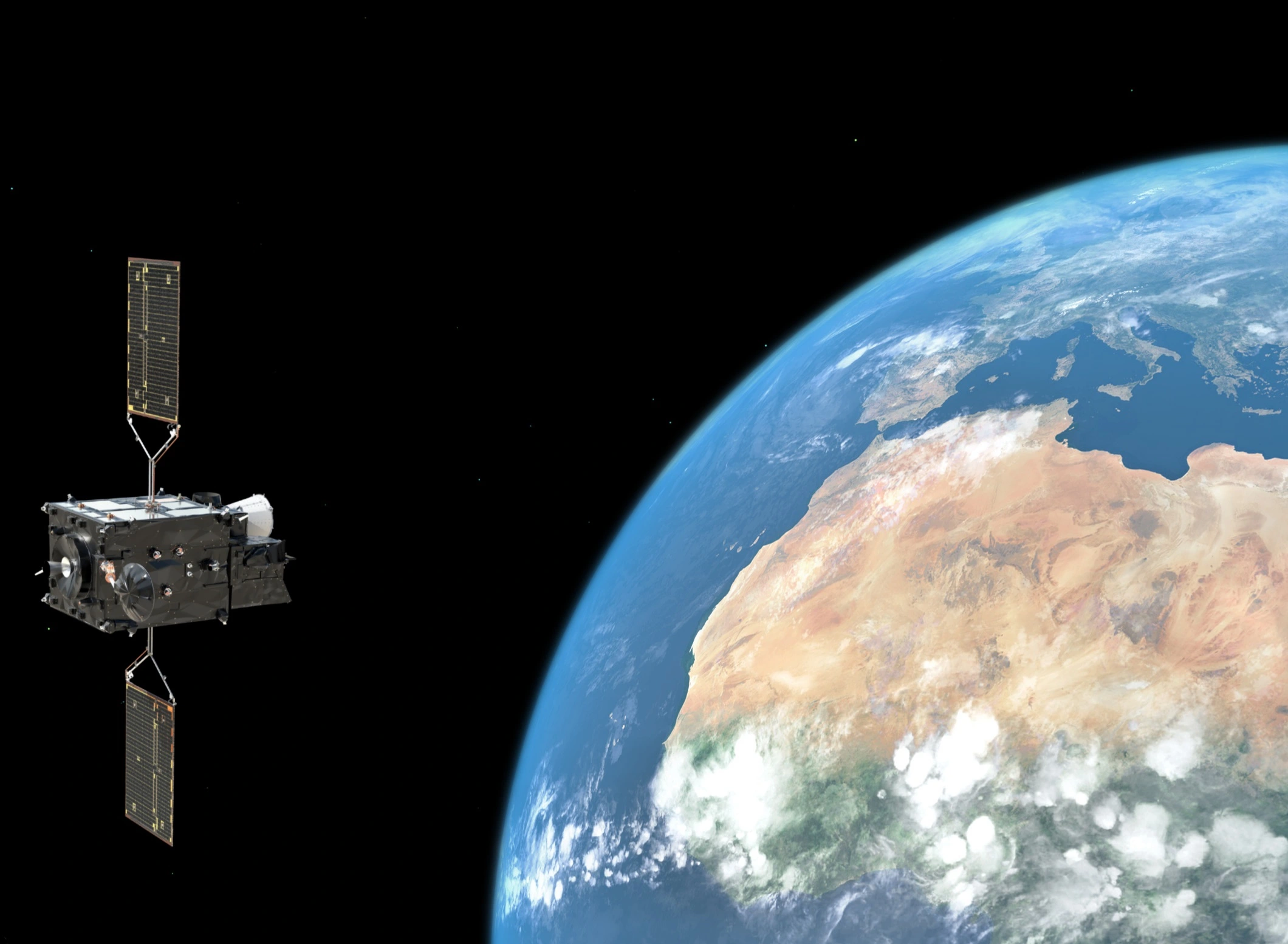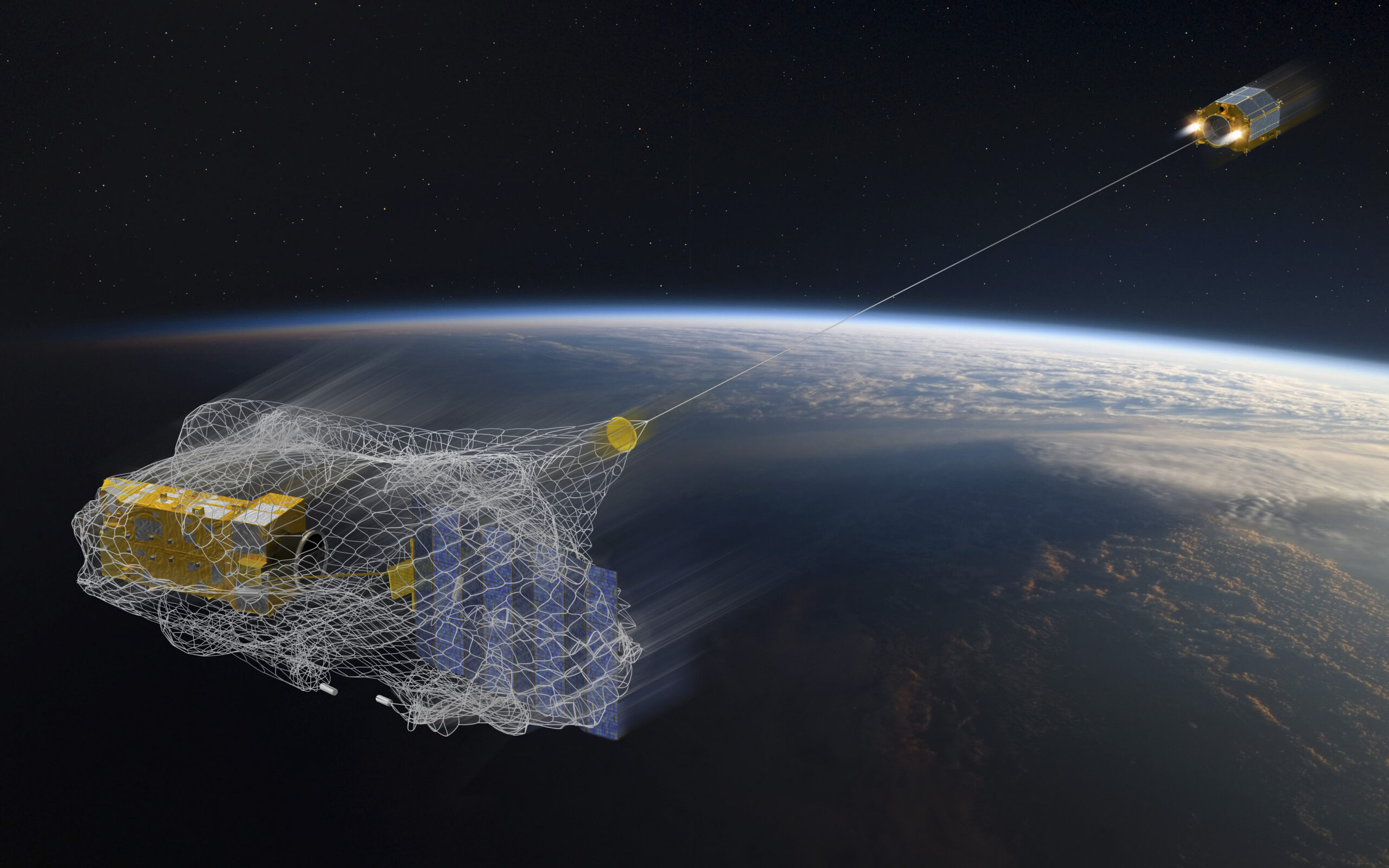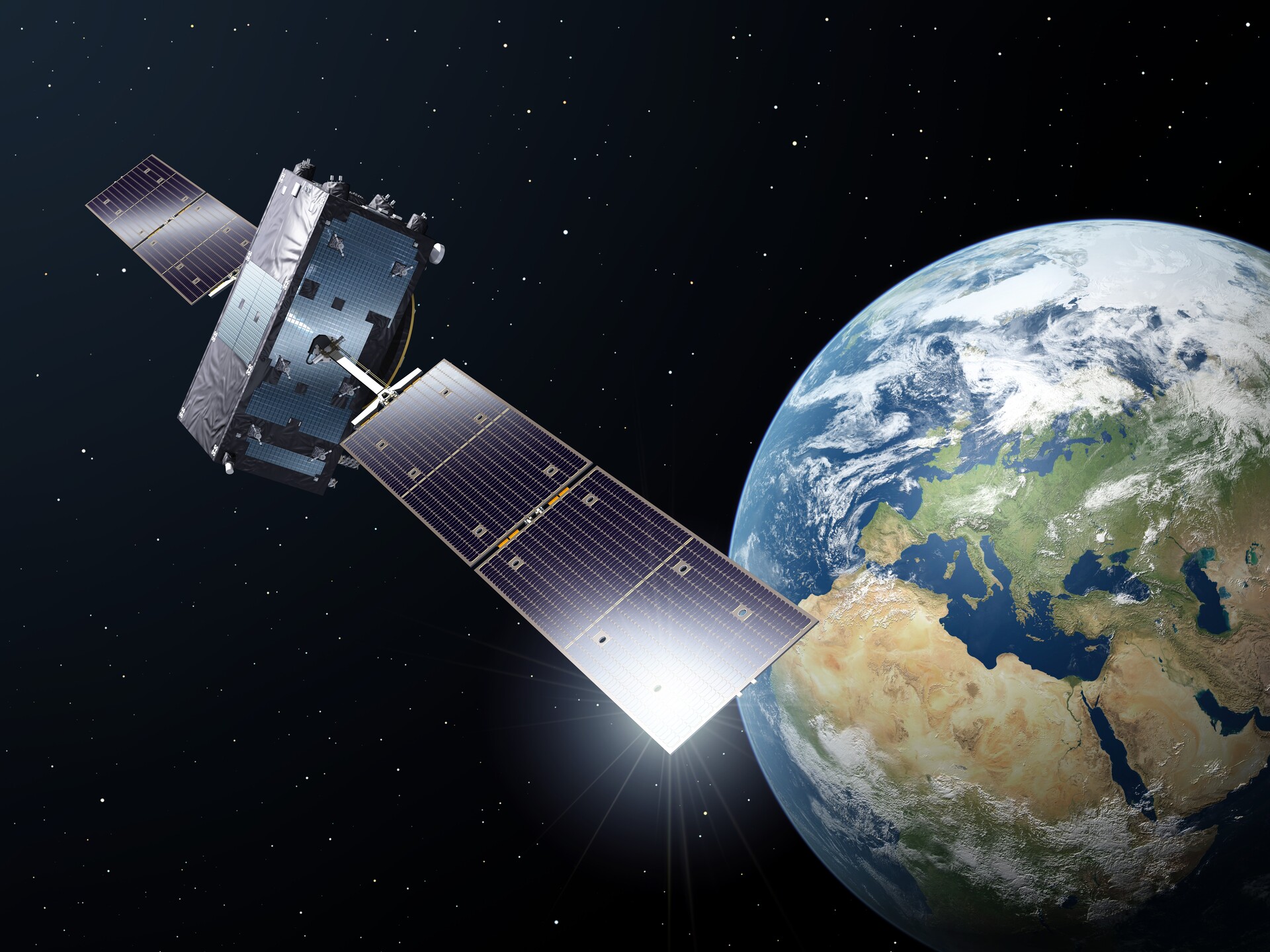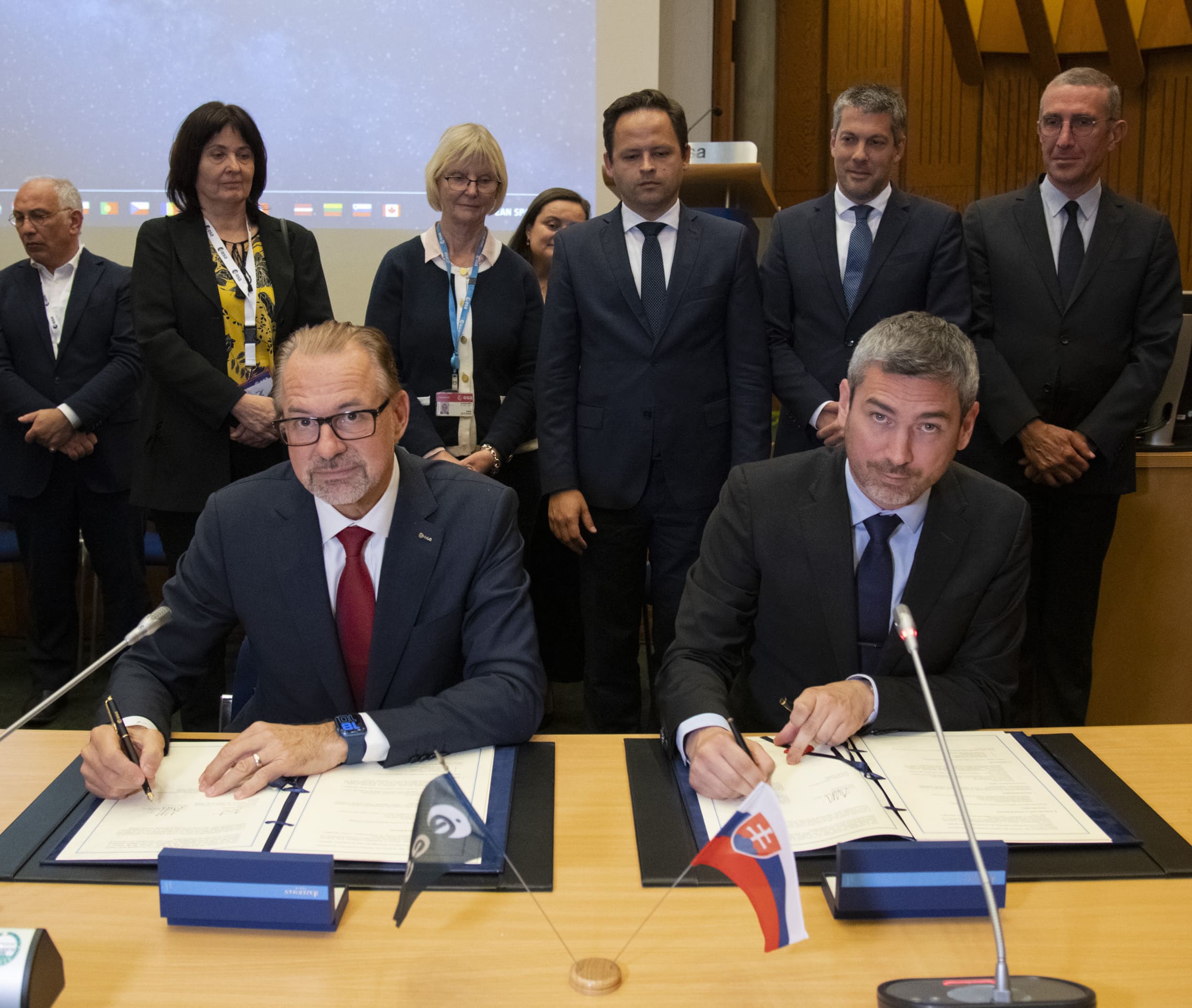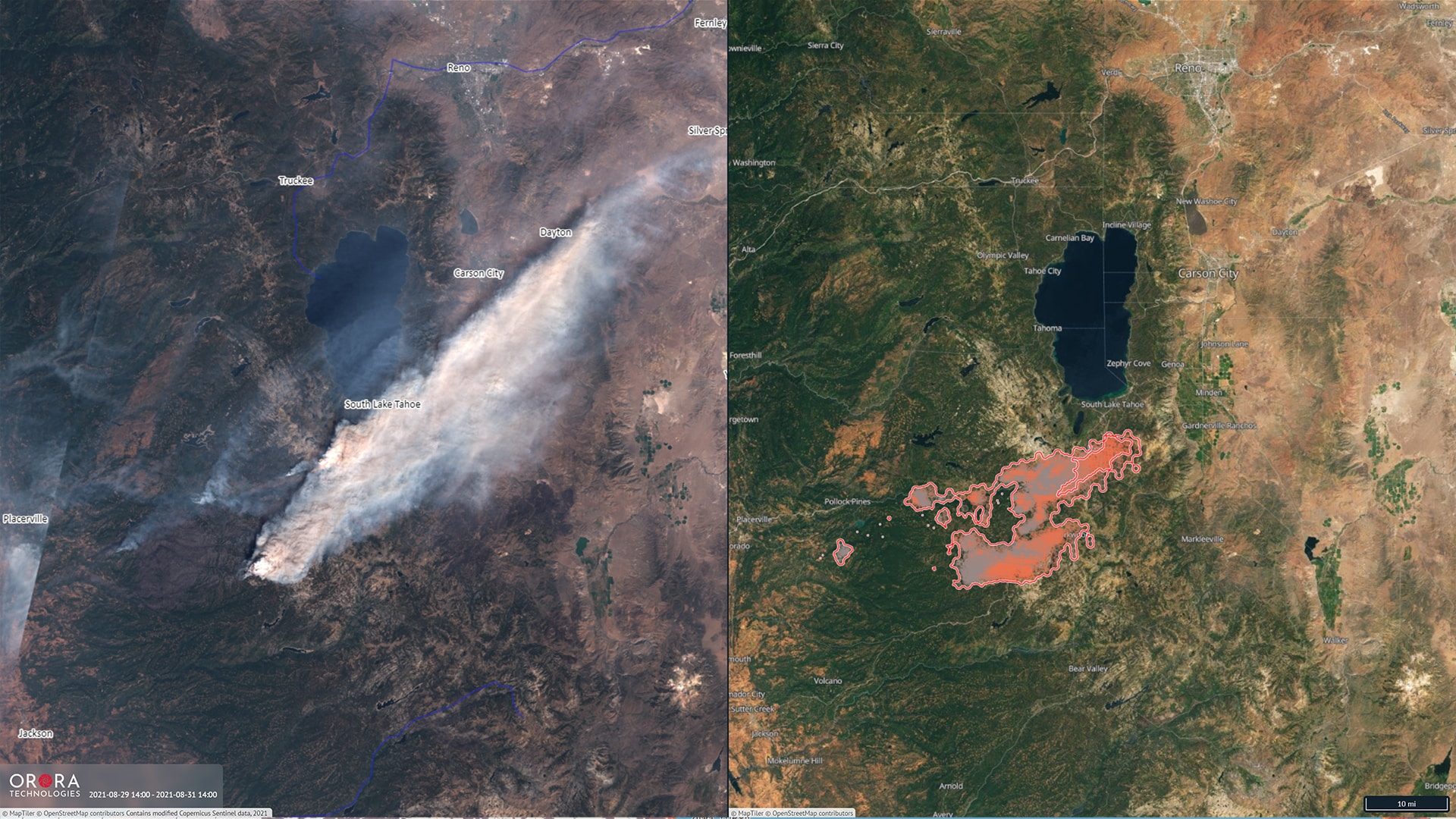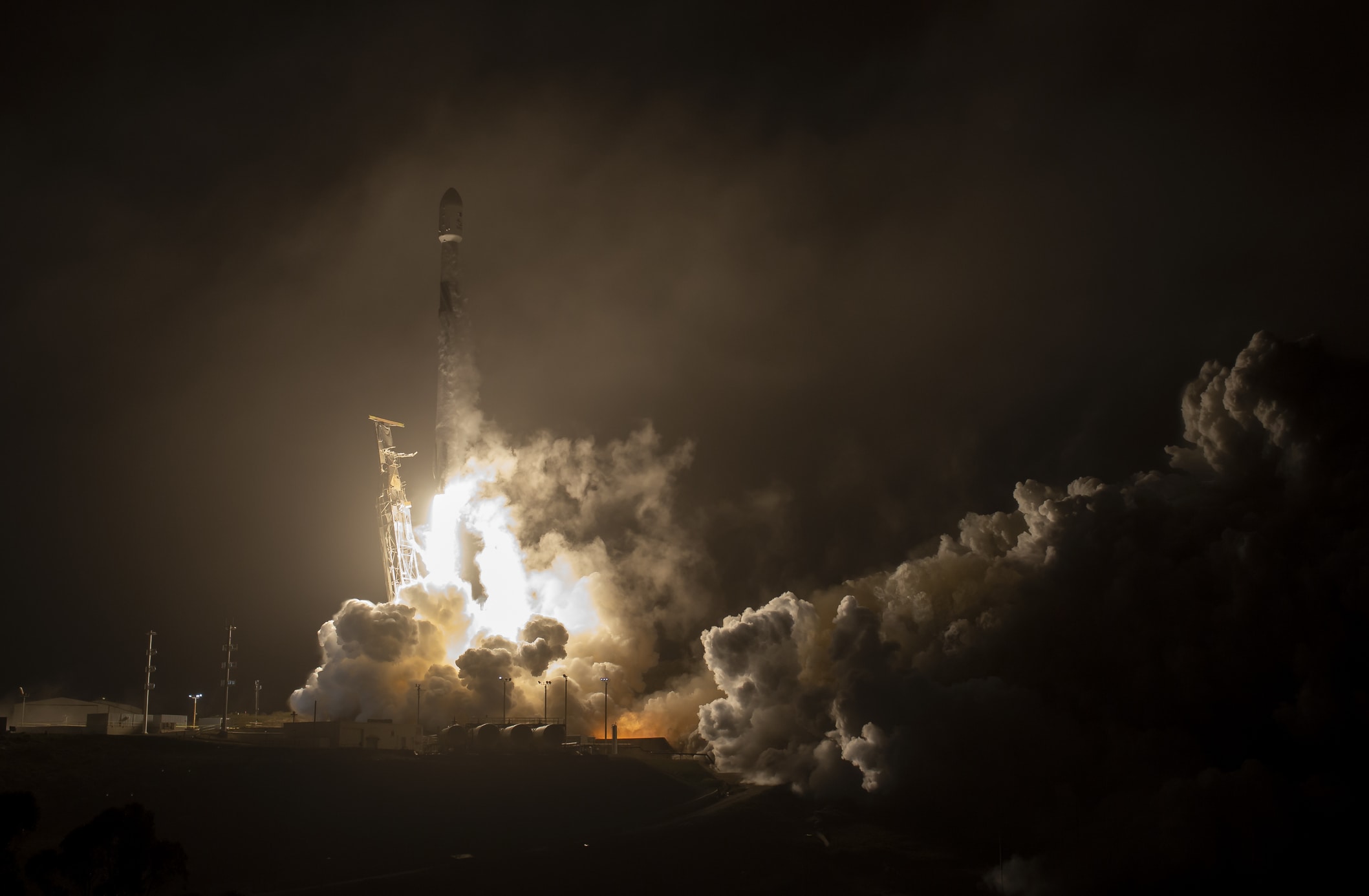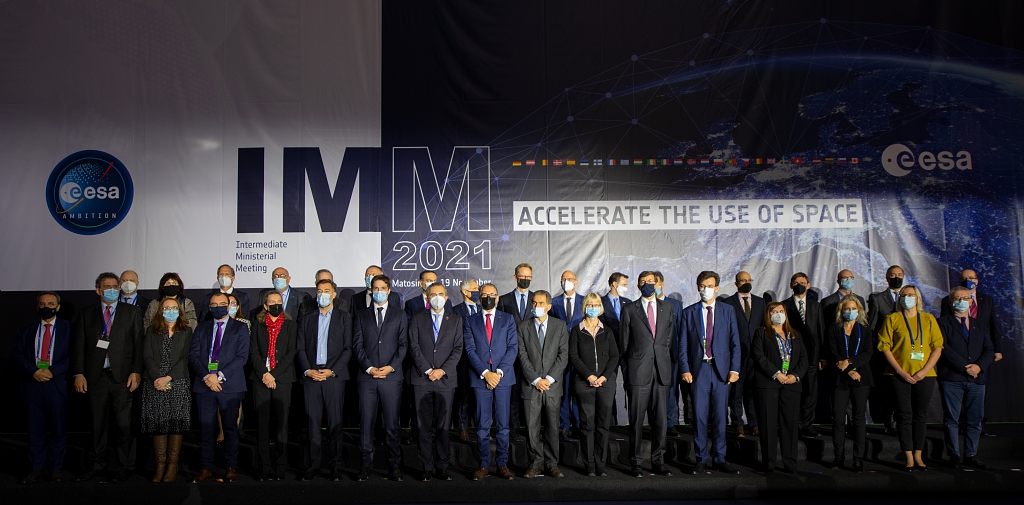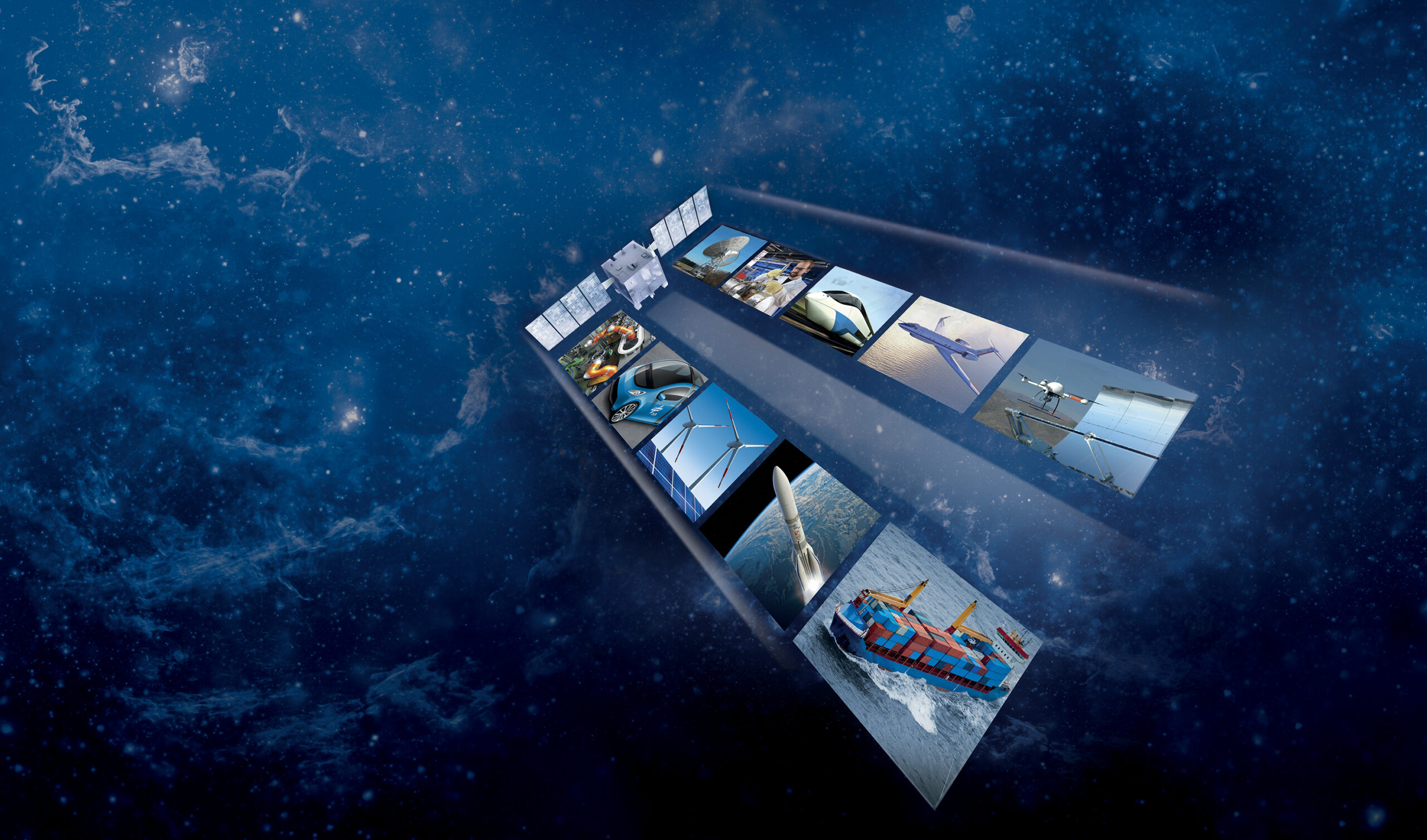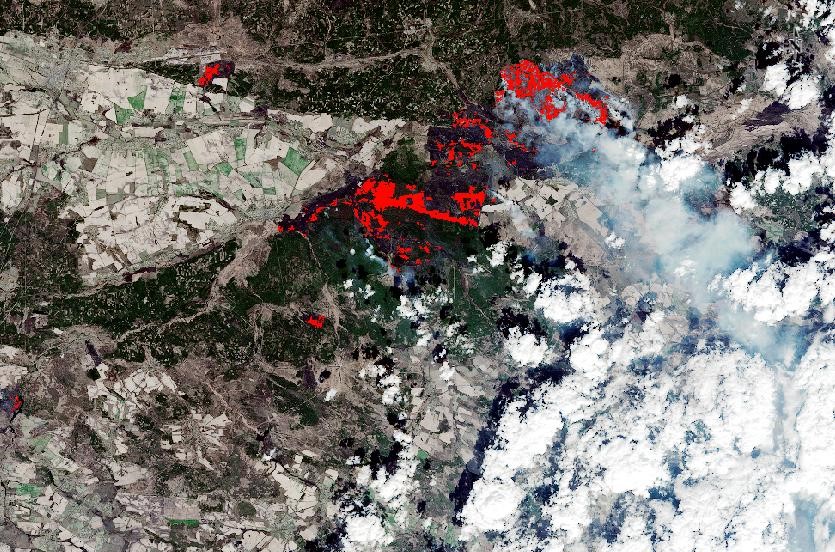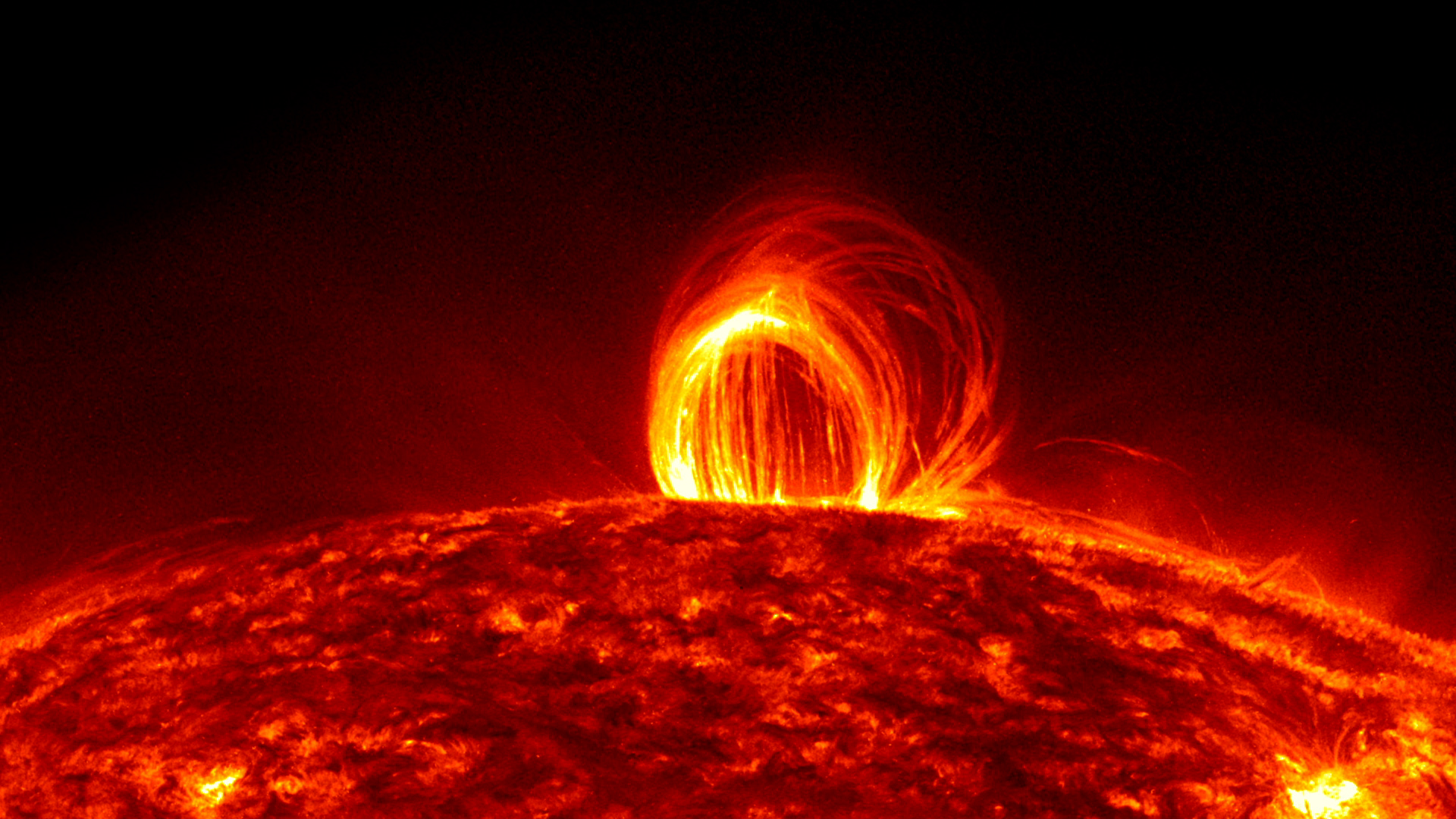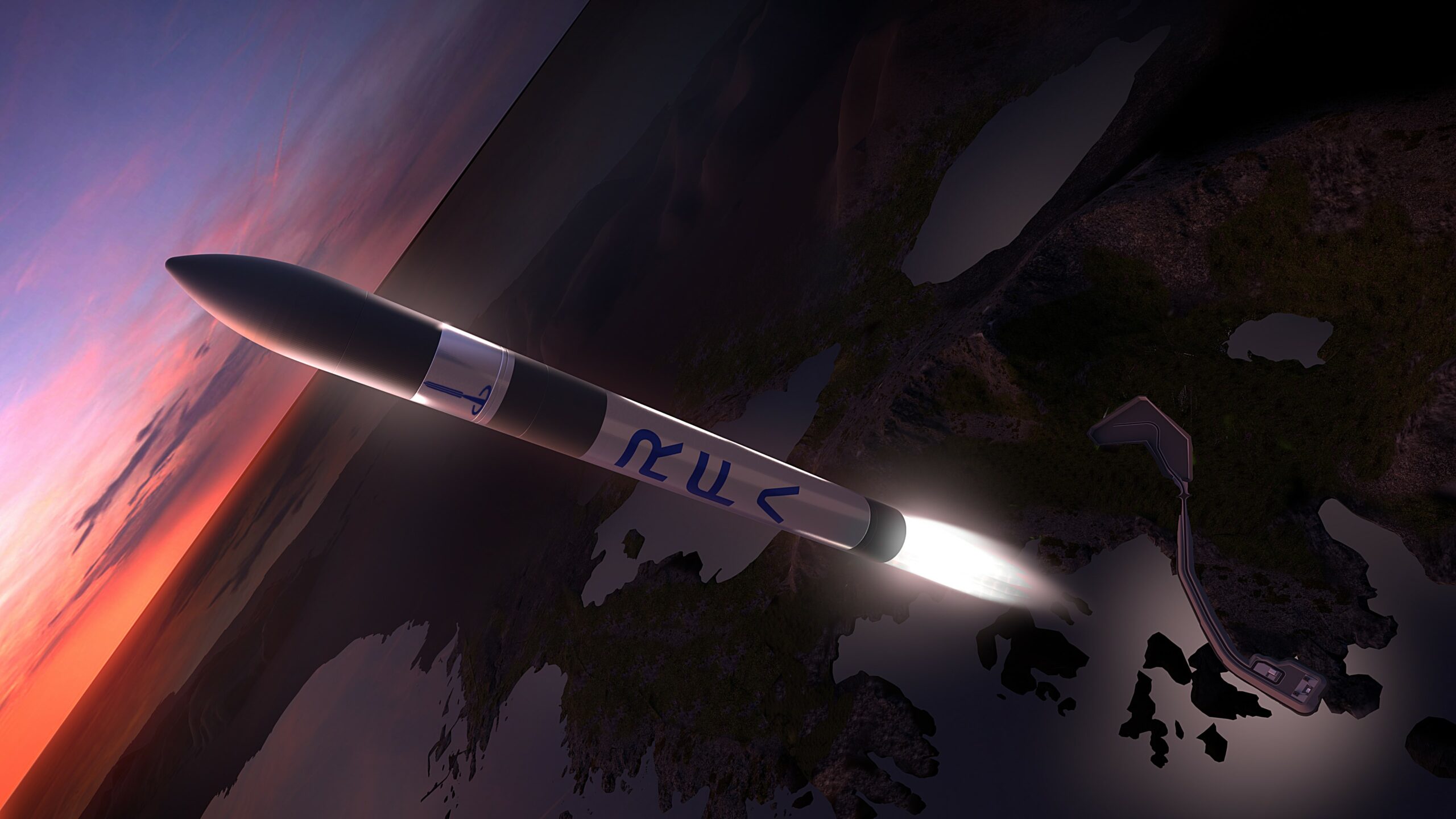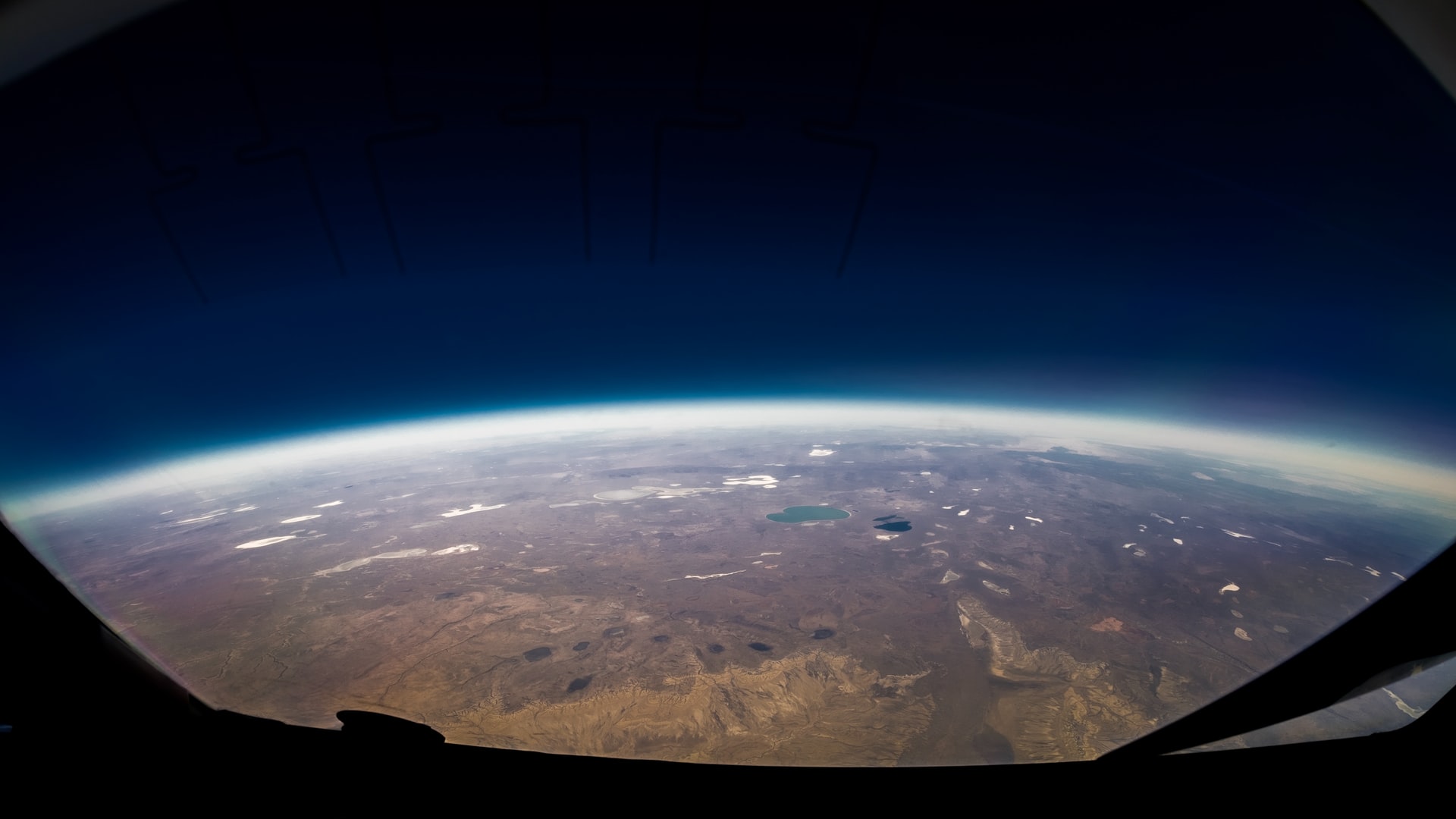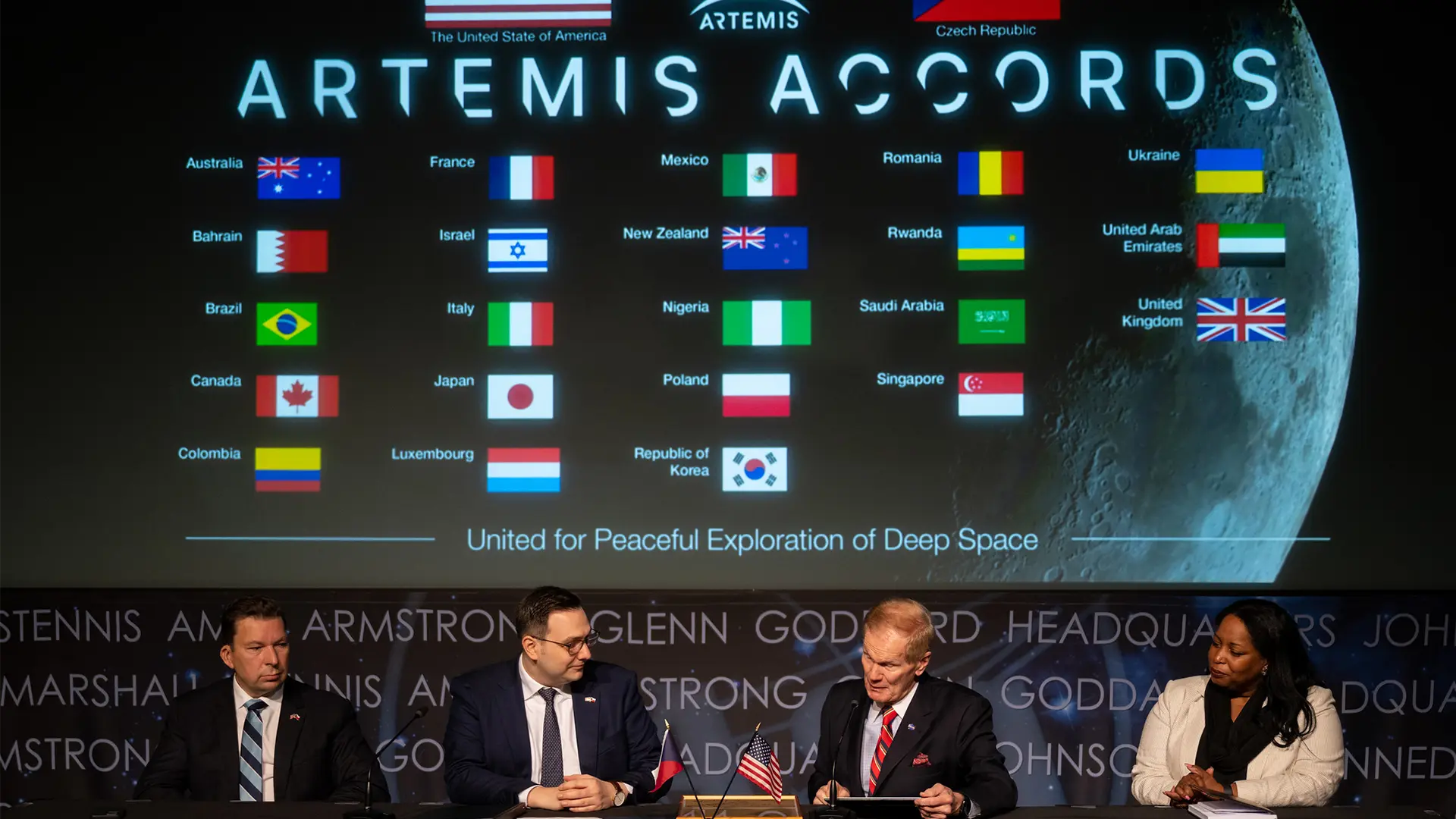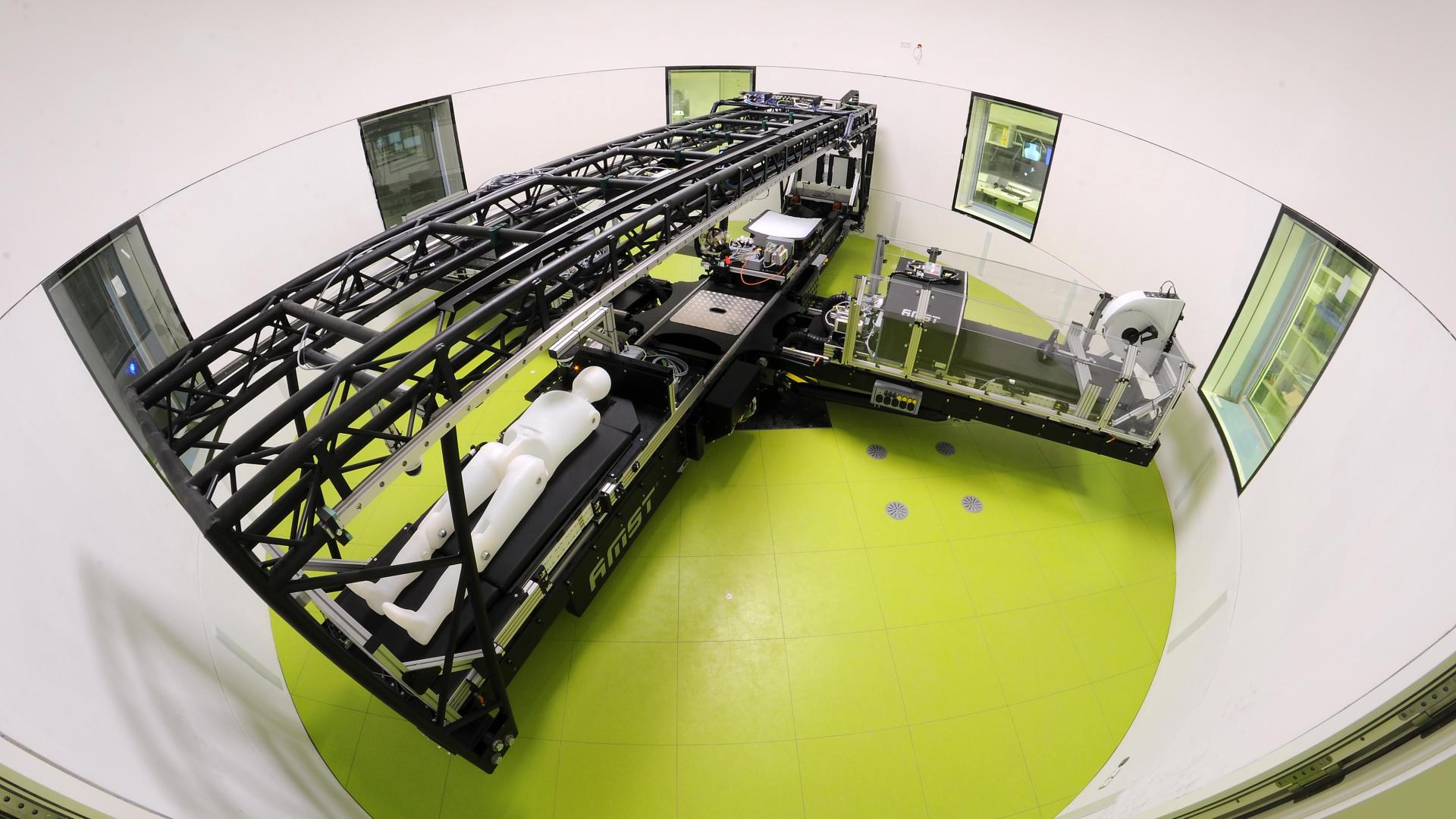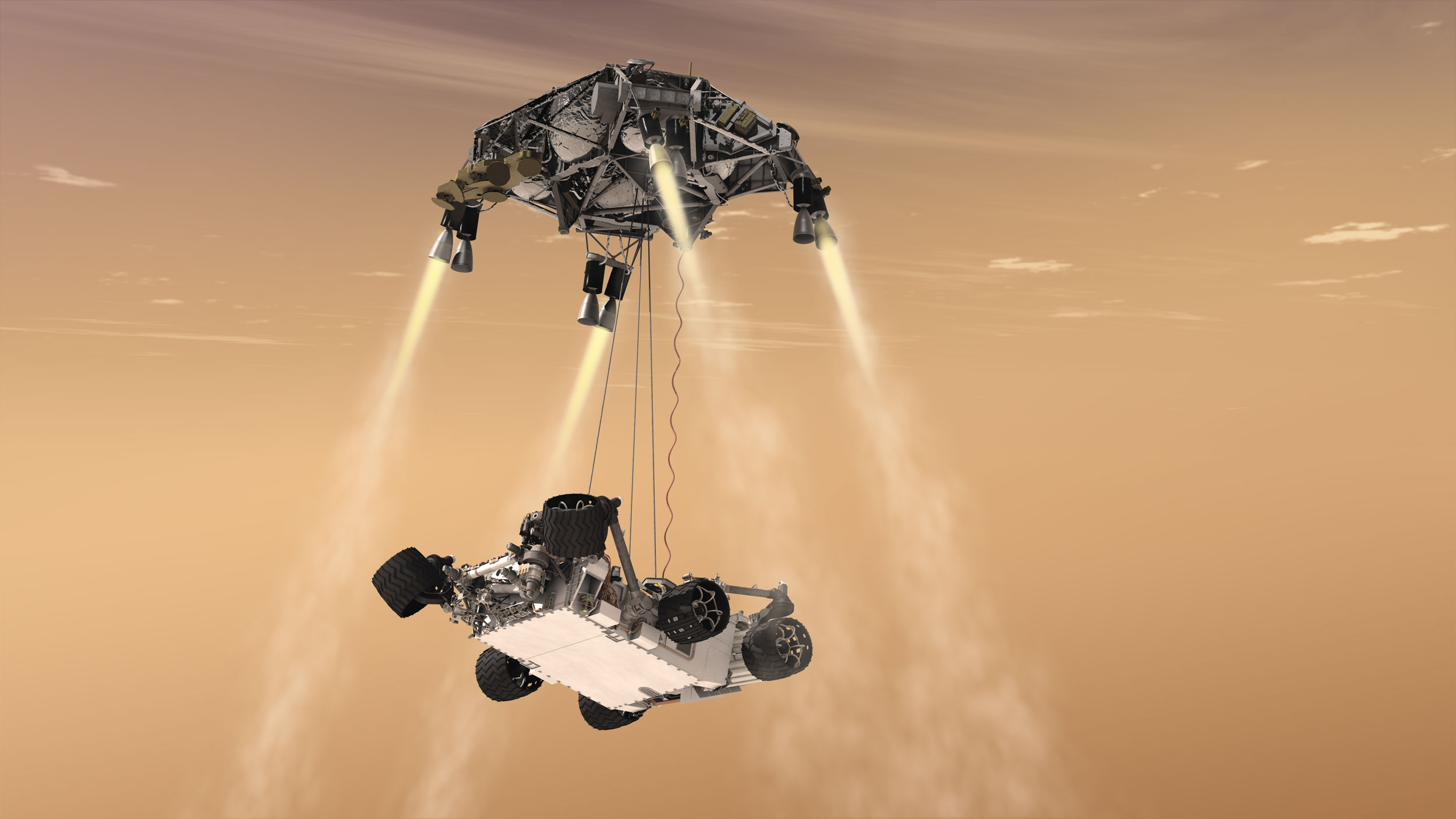
This is what names mean in space exploration
Published on Fri, 19.03.2021 – 10:55 CET in Missions, covering #teamSPACEThis article is about the names of space flight programs. What sounds boring at first glance is quite exciting when you take a closer look. Names in space flight are never given just like that, but follow certain principles. Which ones, we try to find out in this article. At the end of this article we will summarize the practical use of the knowledge about the naming of programs. But in the first step, let's take a look at some well-known and sometimes also unknown programs in chronological order.
| # | Mission | Land | Start | End |
|---|---|---|---|---|
| 1 | Sputnik | USSR | 1957 | 1958 |
| 2 | Vanguard | USA | 1957 | 1959 |
| 3 | Explorer | USA | 1958 | – |
| 4 | Venera | USSR | 1961 | 1983 |
| 5 | Wostok | USSR | 1961 | 1963 |
| 6 | Woschod | USSR | 1964 | 1966 |
| 7 | Mercury | USA | 1958 | 1963 |
| 8 | Gemini | USA | 1961 | 1967 |
| 9 | Apollo | USA | 1961 | 1975 |
| 10 | Luna | USSR | 1958 | 1976 |
| 11 | Zond | USSR | 1963 | 1970 |
| 12 | Viking | USA | 1968 | 1982 |
| 13 | Voyager | USA | 1972 | – |
| 14 | Cosmic Vision | EU | 2005 | – |
| 15 | Tianwen | China | 2007 | – |
| 16 | Tiangong | China | 1993 | – |
| 17 | Artemis | USA | 2019 | – |
| 18 | Chandrayaan | Indien | 2008 | – |
Sputnik (Спутник) - the companion
Der erste künstliche Satellit der Welt
Sputnik war der erste künstliche Satellit, der die Erde umkreist hat. Sputnik ist russisch und heißt auf deutsch übersetzt Begleiter. Das ist naheliegend, weil der mit einem Durchmesser von 58 Zentimetern und einer Masse von 83,6 kg kleine Satellit die Erde umkreist und sie damit begleitet hat. Am 04. Oktober 1957 wurde er von den Russen, damals noch der UdSSR, in die Umlaufbahn gebracht. Lange gehalten hat er sich dort nicht, denn er umkreiste die Erde in einer relativ tiefen Umlaufbahn (elliptische Bahn mit einem Abstand von 215 km bis 939 km).
Nach gut drei Monaten ist Sputnik wieder in die Atmosphäre eingetreten und verglüht. Ein Erfolg war die Mission trotzdem. Denn er hat geschafft zu beweisen, dass man Satelliten ins Weltall bringen kann. Das wiederum hat in den USA den so genannten „Sputnik-Schock“ ausgelöst.

Sputnik (Спутник)
USSR
- Typ: Satellite
- Start: Oct 4, 1957
- Ende: Jan 4, 1958
- Dauer: 92 days
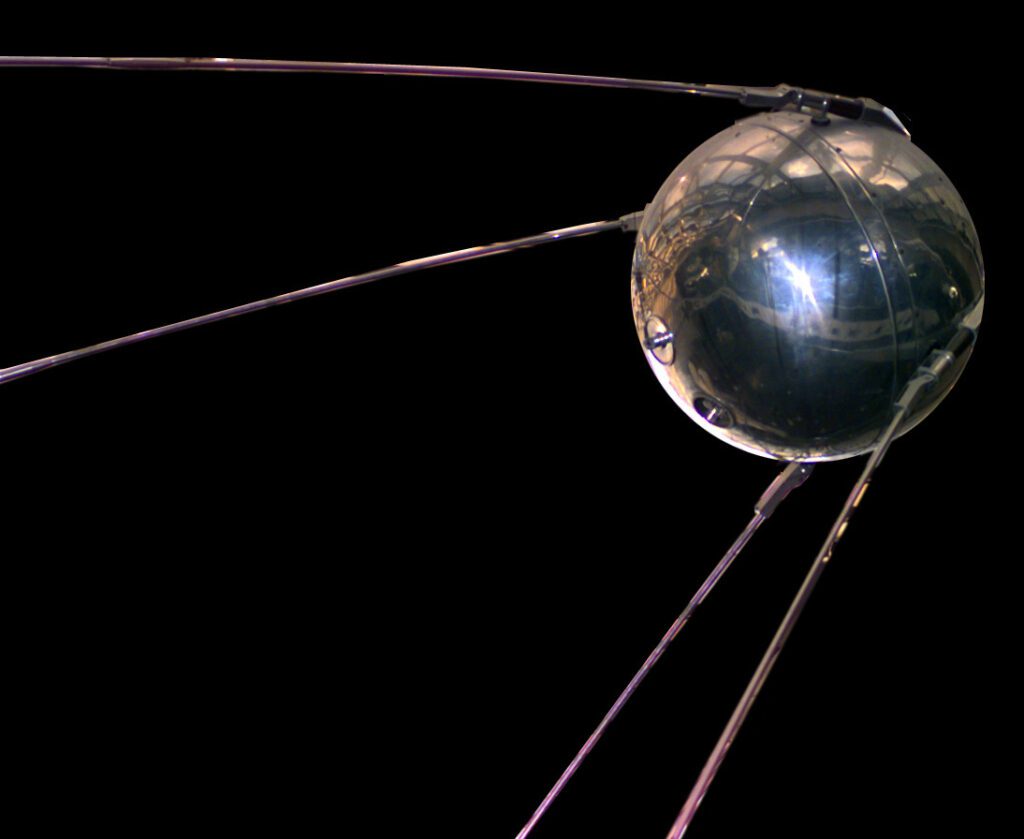

The "Sputnik shock" is the term used to describe the reaction of the U.S. public and media to the launch of Sputnik in the USSR. After all, anyone who is capable of launching a rocket into space and a satellite into orbit is also capable of launching a rocket to any point on Earth. In the days of the Cold War, this naturally caused fear, because it was not a matter of a small metal ball orbiting the earth and landing on American soil again, but rather the threat of nuclear first strikes in the worst case. Therefore, the Americans were simply afraid that the Russians could now shoot missiles at them without being able to do anything about it.
Sputnik-Schock
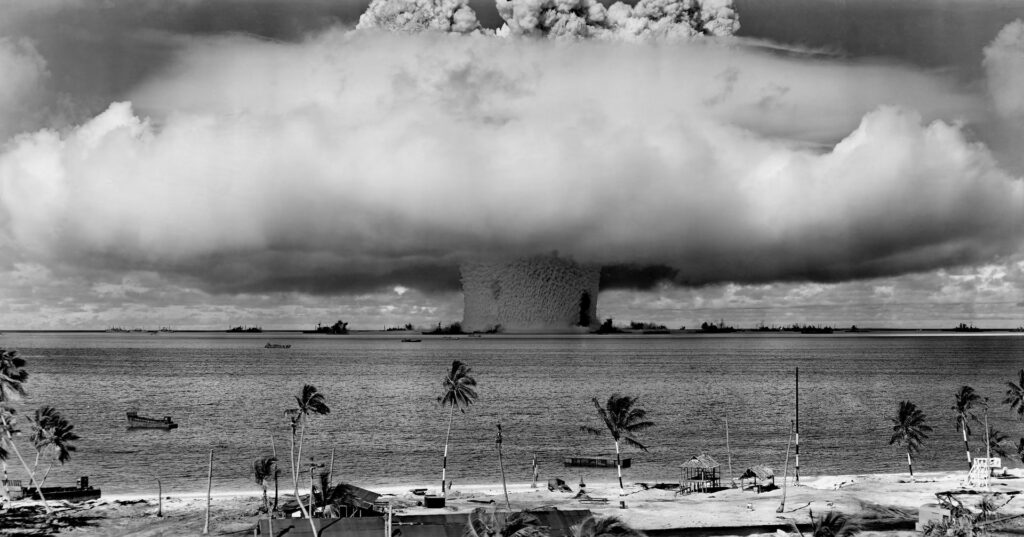
Vanguard - the pioneers
Provokation während des Kalten Krieges
The Americans' fear was also partly based on failures of their own programs. One such was Vanguard, which was launched as an underpinning to the 1955 announcement of putting their own satellites into space. Vanguard ran from 1957 to 1959.
The program was implemented by the Naval Research Laboratory, a civilian research facility of the United States Navy and the United States Marine Corps. The civilian nature of space flight was to be emphasized, and President Eisenhower wanted to use it to support his "open skies" proposal. Indeed, at the first U.S.-Soviet summit since the 1955 Potsdam Conference in Geneva, the President had proposed to the Russians that they grant each other overflight rights over their own territory as a sign of rapprochement. This was clearly rejected by the Soviet Union. Vanguard was therefore also a provocation to the Soviet Union.
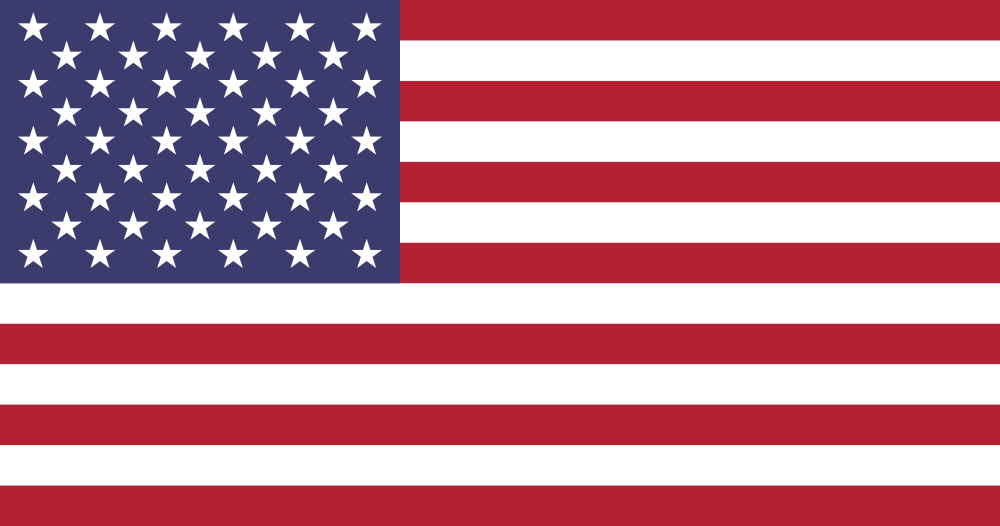
Vanguard
USA
- Typ: Satellite
- Start: Dec 6, 1957
- Ende: Sep 18, 1959
- Dauer: 22 months
240 years in space
To catch up with the Russians after the launch of Sputnik in October 1957, an American satellite was to be launched into space on December 6, 1957. However, this and another launch failed. On the third attempt, on March 17, 1958, Vanguard I became the first American satellite to reach space. It was the size of a grapefruit, weighed about 1.5 kg and was the first to be powered by solar cells. It is still orbiting the Earth today and will enter the Earth's atmosphere around the year 2198 and then burn up.
Explorer - the knowledge seekers
Die USA werden zur Raumfahrtnation
Noch während Vanguard lief, starteten die Amerikaner 1958 ein weiteres Raumfahrtprogramm namens „Explorer“, was soviel wie „Forschungsreisender“ oder „Wissenssuchender“ bedeutet. Angelehnt ist der Name des Programms an große Namen wie Christoph Kolumbus (* um 1451, † 20. Mai 1506; gilt als moderner Entdecker Amerikas) oder Fernando Magellan (* vor 1485, † 27. April 1521; umrundete als Erster nachweisbar die Erde).
Nach dem Desaster von Vanguard war Explorer 1 der dritte Satellit im Weltall und das erste “Raumfahrzeug” der Amerikaner, was es wirklich ins Weltall geschafft hat. Gestartet wurde das Programm wurde von der Army Ballistic Missile Agency als Wettbewerbsprogramm zu Vanguard. In dem bis heute – unter dem Namen der NASA – laufenden Programm wurden bisher 105 Satelliten gestartet, der letzte am 11. Oktober 2019. Für das 4. Quartal 2021 ist ein weiterer Start geplant, im Jahr 2023 sollen sechs Satelliten starten und 2024/25 ein weiterer.

Explorer
USA
- Typ: Satellite
- Start: Feb 1, 1958
- Ende: until today
- Dauer: 65+ Jahre
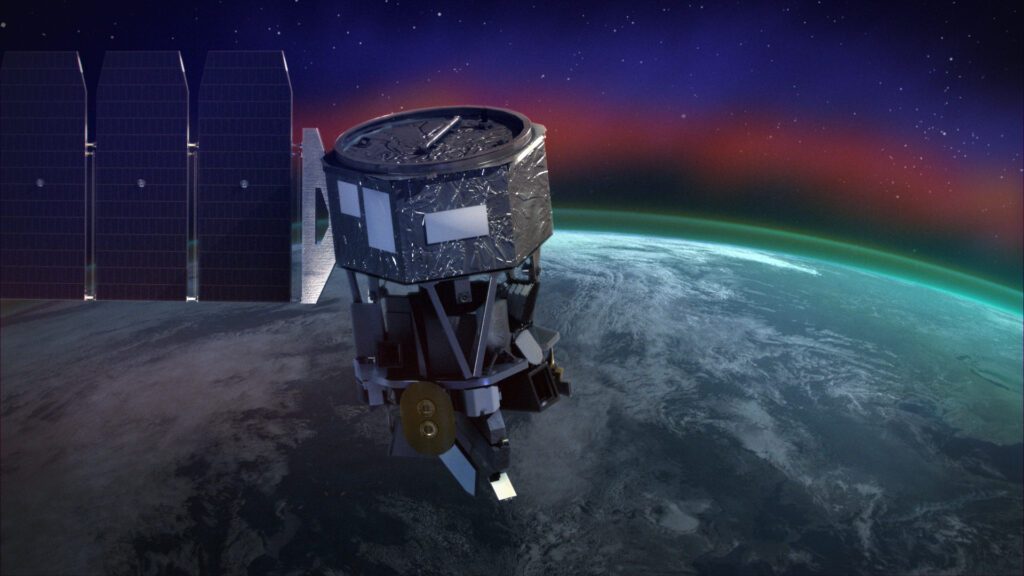
Venera (Венера) - Venus
Zu Besuch auf einem fremden Planeten
After the success of Sputnik, the Russians launched the Venera space program, which translates as "Venus," just a few years later. This clarifies what this program was about: sending probes to Venus, Earth's inner neighboring planet. The program ran from 1961 to 1983 and within these 22 years several probes were sent to Venus. The Russians approached the surface probe by probe, but only Venera 7 succeeded in landing on December 15, 1970.
This made it the first probe ever to land on an extraterrestrial planet. Venera 7 was able to withstand the conditions on Venus (92 bar pressure, average surface temperature of 464 °C / 867 °F) for probably 23 minutes. For that time at least, a weak signal reached Earth, after which it fell silent. Venera 8, 9, 10, 11, 12 and 14 also landed on Venus and provided images and measurement data from the surface. Incidentally, France, Austria and the GDR, among others, were involved in building the instruments for individual missions.

Venera (Венера)
USSR
- Typ: Sonde
- Start: Feb 12, 1961
- Ende: Jun 7, 1983
- Dauer: 22 years, 4 months
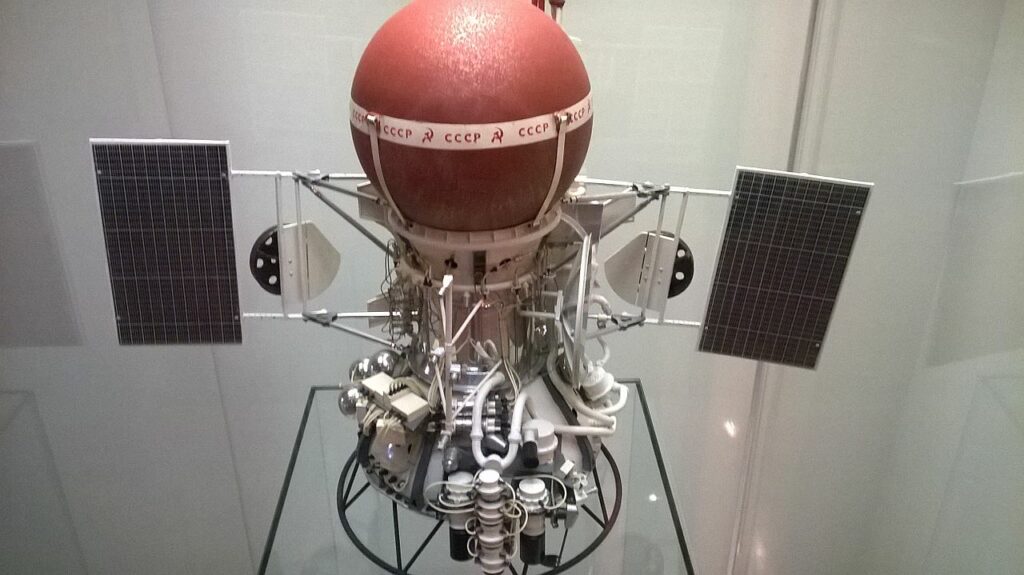
Vostok (Восток) - the East
Erster astronautischer Flug der Menschheitsgeschichte
Also in 1961, the Russians launched the "Vostok" program. This translates as "East" and was intended to demonstrate the USSR's supremacy in the space race. Vostok was primarily used to refer to spacecraft, but also to the rockets used for the launches. What makes Vostok special is that it was the USSR's first manned space program. After the Soviet Union had already reached a milestone in space flight with Sputnik, another one was to follow with Vostok.
In several test flights, among others, dogs were successfully brought into space and back to earth. Vostok 1 then had the first ever human being on board: Yuri Alexeyevich Gagarin (* March 9, 1934, † March 27, 1968). He orbited the Earth once in 108 minutes on April 12, 1961, and then landed safely in the Volga region. On June 16, 1963, Valentina Tereshkova (* March 6, 1937) flew into space with Vostok 6. And that, too, is a record: not only was she the first woman to do so, but to this day she is the only one to have done so alone - without any other crew members.

Wostok (Восток)
USSR
- Typ: Raumflug
- Start: 1961
- Ende: 1963
- Dauer: 2 years
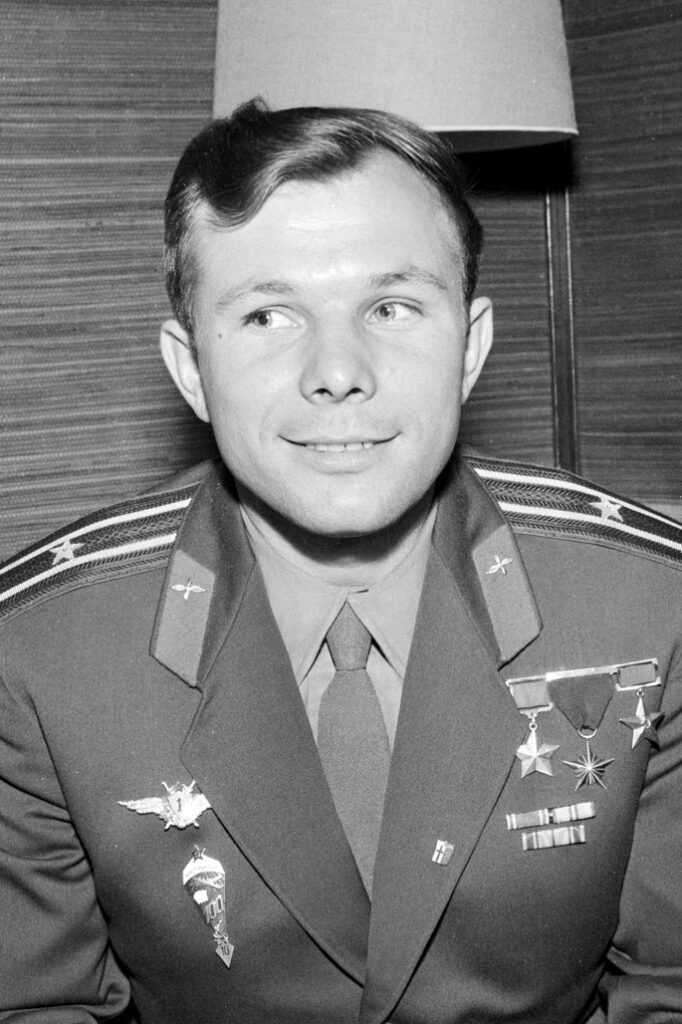

Voskhod (Восход) - the sunrise
Fake-Programm mit Sicherheitsrisiken
Das Nachfolgeprogramm von Wostok hieß Woschod – übersetzt „Sonnenaufgang“ – und lief von 1964 bis 1966. Mit der neuen Bezeichnung sollte dem Westen (allen voran den Vereinigten Staaten) vorgegaukelt werden, dass ein komplett neues System verwendet wird. Wie wir heute wissen, war dem allerdings nicht so. Vielmehr wurde die bei Wostok eingesetzte Technik modifiziert und weiter genutzt.
Eine der gravierendsten Änderungen war, dass die Schleudersitze ausgebaut wurden, um Platz für insgesamt drei Astronauten zu schaffen. Trotz der Modifikationen war der Platz in der Raumkapsel sehr begrenzt, weswegen die Kosmonauten ohne die sonst üblichen Druckanzüge fliegen mussten. Dieses Vorgehen war ein gewagtes Manöver, doch es gelang. Die russische Propaganda stellte es als Zeichen der Sicherheit russischer Raumfahrtsysteme dar.

Woschod (Восход)
USSR
- Typ: Raumflug
- Start: Oct 6, 1964
- Ende: Feb 22, 1966
- Dauer: ~ 17 months
Mercury - the gods messengers
Erster astronautischer Raumflug eines US-Amerikaners
Abraham "Abe" Silverstein (* September 15, 1908, † June 1, 2001), who worked at NASA for many years as manager and director of space development, suggested the name Mecury for the first manned space program of the USA. He was referring to Roman mythology, in which Mercury is the messenger of the gods (in Greek, it is Hermes). The program ran from 1958 to 1963 and on May 5, 1961, only about four weeks after Yuri Gagarin, launched Alan B. Shepard as the first American into space.
Unlike Gagarin, however, he did not orbit the Earth, but flew in a ballistic orbit to an altitude of 187 km - and thus, by definition, into space - but landed back on Earth just 15 minutes and 22 seconds later. The first official astronauts of the USA, who were introduced to the public as "Mercury Seven", achieved special fame. In addition to Shepard, they were Virgil I. Grissom, John H. Glenn, Malcom Scott Carpenter, Walter M. Schirra Jr, Donald K. Slayton and Leroy Gordon Cooper. The program was terminated early because of its successes, and the successor Gemini program was fast-tracked. This was to keep the promise made by John F. Kennedy to achieve a lunar landing within the 1960s.

Mercury
USA
- Typ: Raumflug
- Start: 10/1958
- Ende: Jun 12, 1963
- Dauer: 5 years, 9 months
Alan Shepard and Sally Ride - National Heroes of the United States
The importance of the Mercury program in the collective memory of the U.S. is reflected, among other things, in the hero status of Alan Shepard. At the Kennedy Space Center Visitor Complex (Cape Canaveral, Florida, USA), for example, there is a gold-plated statue commemorating his first space flight. In addition, Blue Origin's suborbital rocket was christened "New Shepard." And the planned flight time of around eleven minutes also shows parallels to the Americans' first manned space flight.
Far less well known, by the way, were the "Mercury 13." This was the name given to a group of female pilots who had passed the same medical tests as their male colleagues in the 1960s. Although this selection procedure was not an official part of NASA's selection process, it was intended to pave the way for women to also gain access to space. The first U.S. woman in space was Sally Ride (b. May 26, 1951, † July 23, 2012), but she did not launch until June 18, 1983, aboard the Space Shuttle Challenger (STS-7).
Gemini – the twins
Das Brückenprogramm
After the Mercury program was successfully terminated ahead of schedule, the Gemini successor program was launched ahead of schedule. In Latin, Gemini stands for the constellation Gemini, whose two most conspicuous stars are named Pollux (brightest star of the constellation) and Castor (second brightest star of the constellation). In Greek mythology, Castor and Pollux are inseparable twin brothers and sons of Zeus.
NASA asked for names to be proposed for this "bridge program" between Mercury and Apollo. Among all the submissions, Gemini was represented twice. Whether by chance or not, the number two also has a special significance with regard to the goal of this program. The core objective of the Gemini program was to put several people into space at the same time. In addition, techniques were to be tested that were indispensable for the moon landing planned as part of the Apollo program: Among other things, coupling maneuvers of two spacecraft or moving in free space.

Gemini
USA
- Typ: Raumflug
- Start: Dec 7, 1961
- Ende: Feb 1, 1967
- Dauer: 5 years, 3 months
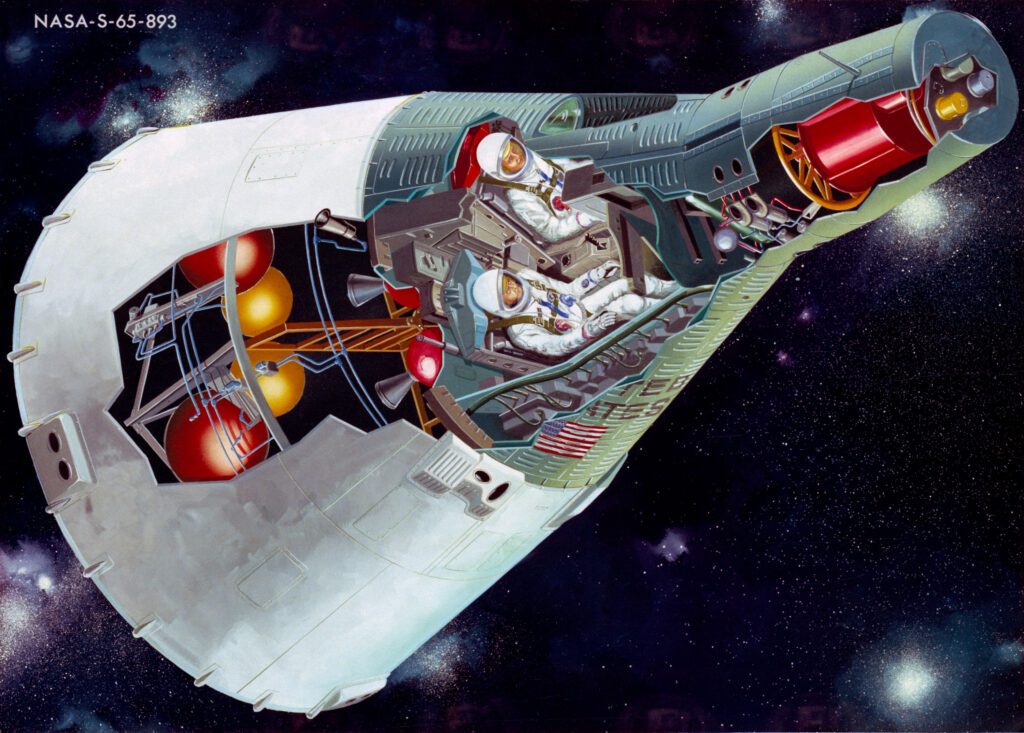
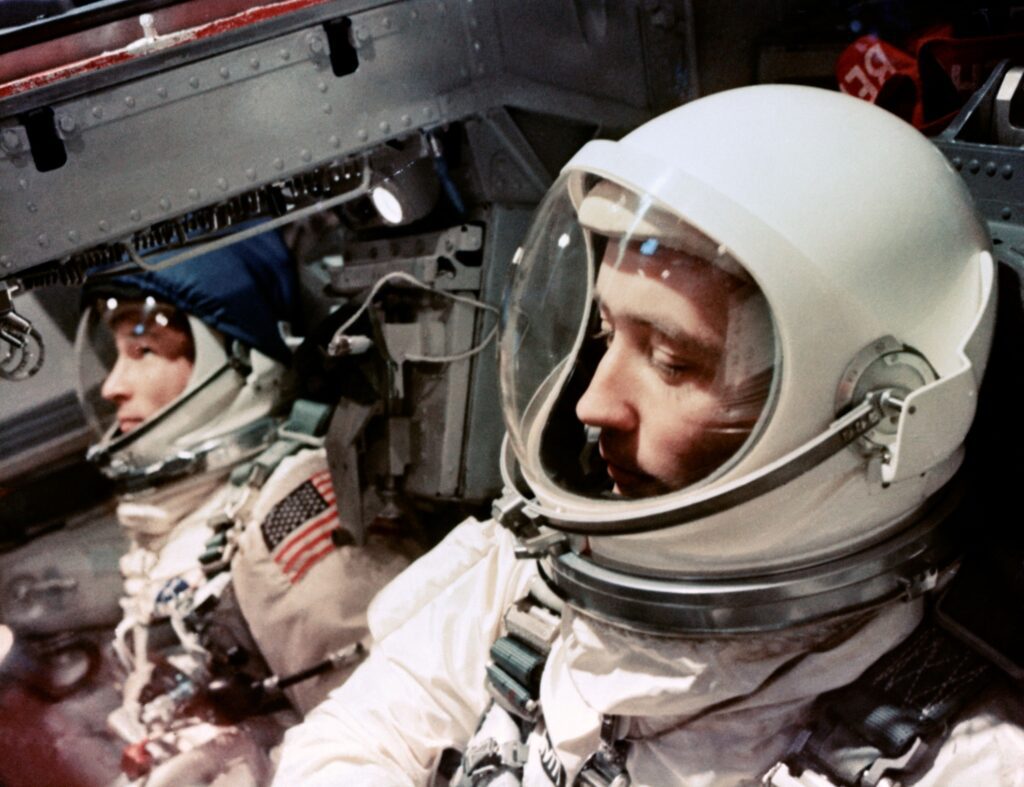
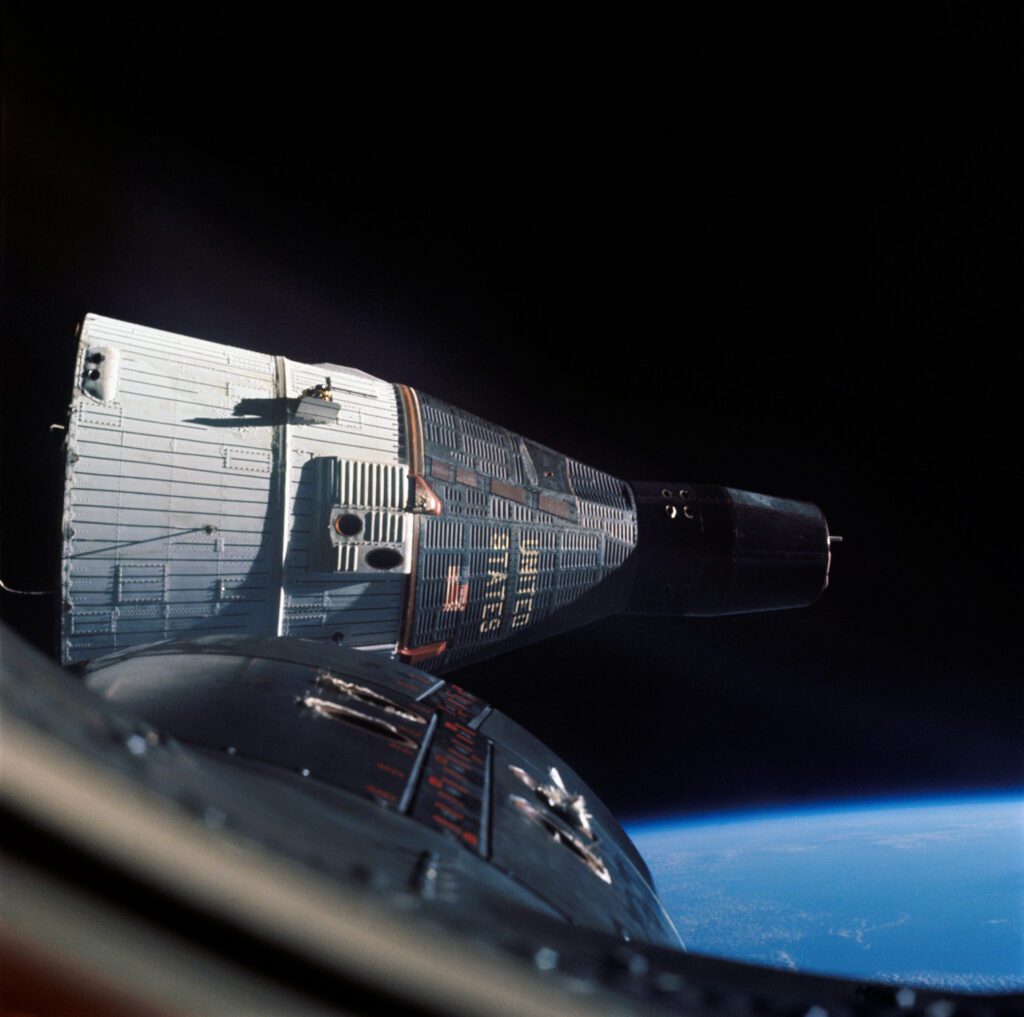

From Gemini to Apollo
During the Gemini program, a total of ten space flights took place and the astronauts included many whose names have gone down in the history of astronautical space flight. For example, John Young (Gemini 3), who later landed on the moon as commander of Apollo 16 and was the first to command a space shuttle. But also James A. Lovell (Gemini 7), who was commander of Apollo 13 in 1970; Neil Armstrong (Gemini 8), commander of Apollo 11 and first man on the moon; Eugene Cernan (Gemini 9), with Apollo 17 the last man on the moon until now; Michael Collins (Gemini 10), who orbited the moon as a pilot on Apollo 11 but did not land; and Edwin "Buzz" Aldrin (Gemini 12), who was the second man to walk on the moon on Apollo 11, completed space flights as part of the Gemini program.
Apollo - the guide and shooter
“That’s one small step for man, one giant leap for mankind.”
On May 25, 1961, the President of the United States, John F. Kennedy, gave a speech to the U.S. Congress that is considered the starting point for what is probably the most famous space program in human history: Apollo.
I believe that this nation should commit itself to achieving the goal, before this decade is out, of landing a man on the moon and returning him safely to the earth. No single space project in this period will be more impressive to mankind or more important for the long-range exploration of space; and none will be so difficult or expensive to accomplish.
John F. Kennedy, excerpt from speech to the U.S. Congress, May 25, 1961

Apollo
USA
- Typ: Raumflug
- Start: May 25, 1961
- Ende: Jul 24, 1975
- Dauer: 14 years
The name "Apollo" was once again suggested by Abe Silverstein, who was already responsible for "Mercury". It is derived from the Greek god Apollo, who in Roman and Greek mythology is considered the god of light, healing, spring, moral purity, divination and the arts. Apollo is of particular historical significance, as this program is the only one to date that has taken humans to an extraterrestrial celestial body. The core program ran from 1961 (first launch of an unmanned Saturn I rocket on October 27, 1961) to 1972 (landing of Apollo 17 on December 19, 1972), but continued with the Apollo-Soyuz Test Project (ASTP) until 1975. Of the total 35 missions of this program, 32 were successful, two failed completely, and one failed at least partially.
Apollo 11 - the mission of success



Probably the most famous mission of this program is Apollo 11. After a successful launch of the Saturn V from the ramp LC-39A (Launch Complex) in Cape Canaveral (at that time Cape Kennedy Air Force Station) on July 16, 1969, Apollo 11 landed on the moon on July 20, 1969 in the Mare Tranquillitatis (Sea of Tranquility). While pilot Michael Collins (* October 31, 1930) orbited the moon, first Neil Armstrong (* August 5, 1930, † August 25, 2012) and then Edwin "Buzz" Aldrin (* January 20, 1930) set their feet on the moon.
Apollo 13 - the successful failure

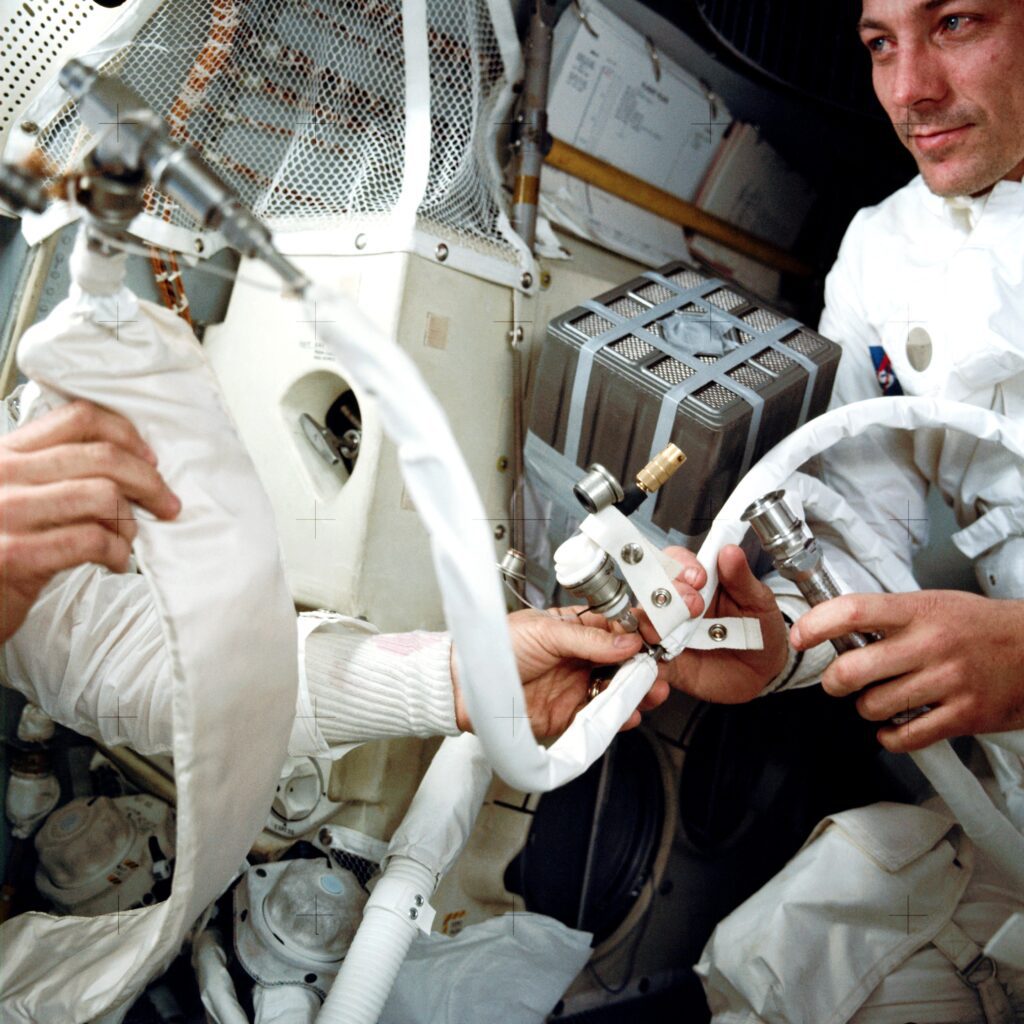
Another well-known mission is Apollo 13, which is considered the most successful failure in the history of astronautical space flight. After an oxygen tank exploded on the way to the moon around April 14, 1970 (about 56 hours after launch on April 11), a landing was no longer possible. Thus, after this incident, the mission's main objective was to bring the three astronauts Jim Lovell (* March 25, 1928), Jack Swigert (* August 30, 1930, † December 27, 1982) and Fred Haise (* November 14, 1933) safely back to Earth.
Swigert's message to the control center, "Housten, we've had a problem here," has gone down in history and become a common phrase. With a lot of improvisational talent and orbit corrections, the spaceship was brought back to Earth. To do so, Apollo 13 performed a swing-by maneuver around the moon, which earned Lovell, Swigert and Haise a record that still stands today: at 401,056 km, they are the three people who have traveled the farthest from Earth to date. A phrase also often quoted and attributed to Apollo 13 is "Failure is not an option." Although it originated in a statement by then NASA Flight Director Gene Kranz, he uttered it during an interview for the film Apollo 13 (1995).
Apollo 1 - the disaster
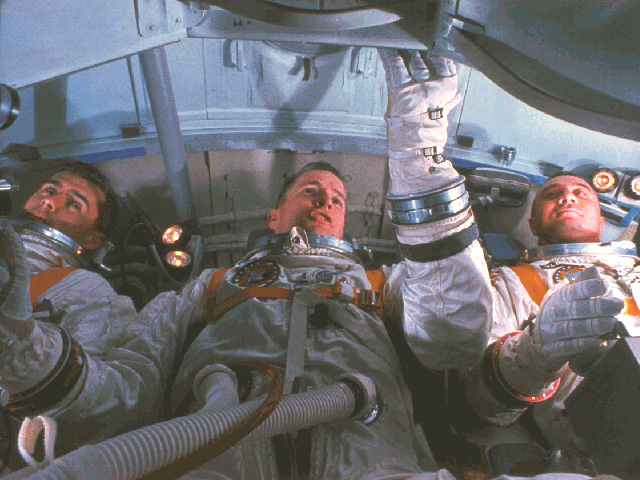

A tragic mission is Apollo 1, whose designation was introduced only afterwards. During a routine exercise on January 27, 1967, fire broke out on board the Apollo spacecraft due to a technical error. Because the pressure inside was too high and the hatch of the capsule had to be opened inward, the astronauts could not leave it. In addition, the fire deprived them of oxygen, so that Roger Chafee (* February 15, 1935, † January 27, 1967), Edward White (* November 14, 1930, † January 27, 1967) and Virgil Grissom (* April 3, 1926, † January 27, 1967) presumably suffocated within 30 seconds and burned beyond recognition. As a result of the accident, the design of the space capsule was revised and astronautical space flights were not undertaken again until Apollo 7 (1968).
Luna (Луна) – the Moon
Viele Sonden, überschaubare Erfolge
The Luna program was launched by the USSR in 1958. Here, too, the name literally says it all: Luna means moon and the exploration of our natural satellite was also the main goal. Originally, Luna ran until 1976, but it is to be restarted in a further phase from 2021 to 2027. ESA will then also be involved in the restart. A total of 44 missions can be attributed to the program so far, 15 of which were successful. However, due to the fact that the program ran during the Cold War and therefore not all data was published, there are also deviating data. According to other sources, there were only 39 missions, of which 22 were failures, four were partial successes and 13 were successes.
The first missions of this program were not very promising: Some rockets exploded during launch (Luna E-1 No. 1), some probes could not leave the orbit (Luna E-6 No. 2 / Sputnik 25) or missed the moon either narrowly (Luna 1, 5,900 km) or enormously (Luna 6, 166,000 km).
However, it is undisputed that the first successful soft landing on the moon occurred on February 3, 1966. The probe Luna 9 collected data for three days and also sent an image of the surface back to Earth. Its successor was Luna 13, which also successfully touched down on the surface on December 24, 1966. Luna 10, 11, 12 and 14, on the other hand, were orbiters that were only supposed to orbit the moon.

Luna (Луна)
USSR
- Typ: Sonde
- Start: Sep 23, 1958
- Ende: Aug 22, 1976
- Restart: 11.08.2023
- Dauer: 18 years
Luna mission objectives
- Impactor (controlled impact)
- Fly by
- Soft Lander
- Orbiter
- Rover
- Sample return
Lunochod - the moonwalker
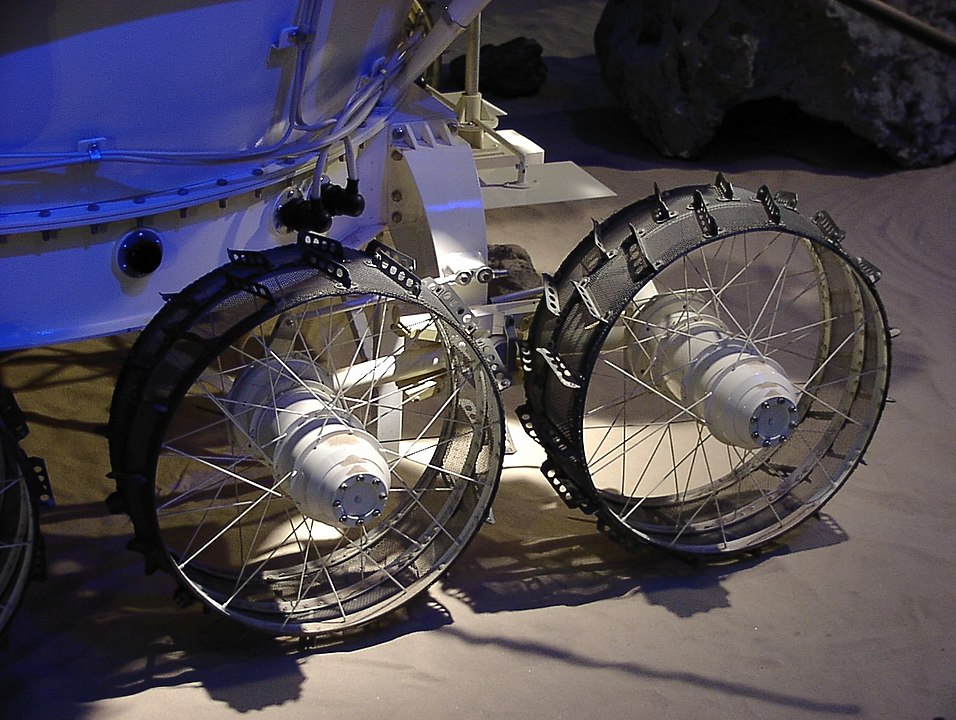
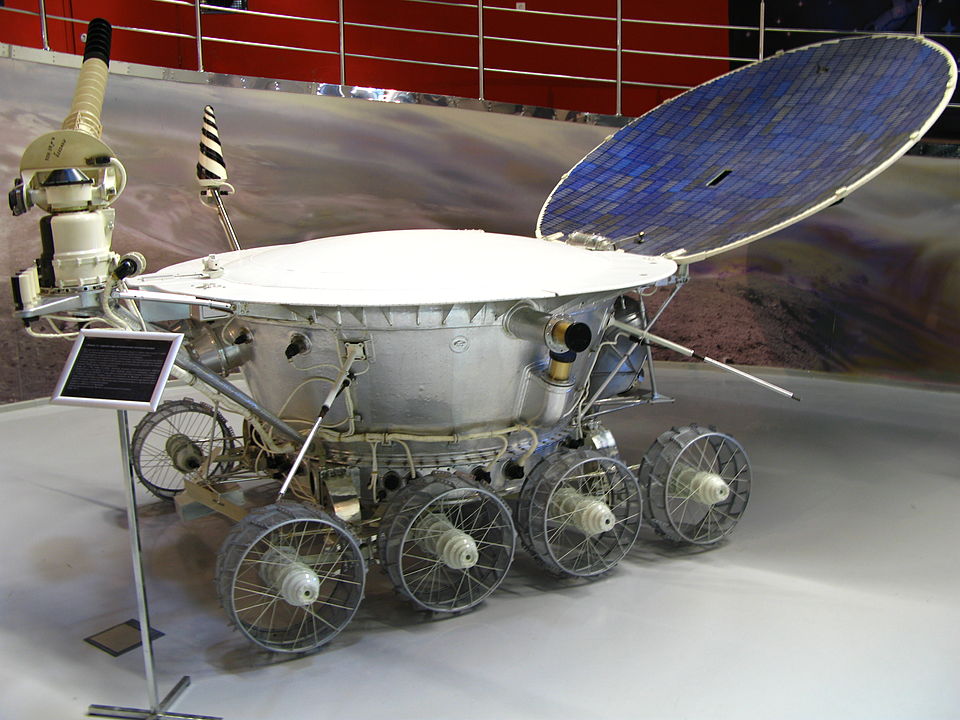
Even though the Americans won the race to land on the moon with Apollo 11, the Russians achieved milestones. For they successfully sent a rover to the moon for the first time with Luna 17. The rover was named Lunochod, which translates as moon walker. The first attempt (Luna E-8 No. 201) in February 1969 failed, but on November 17, 1970, Lunochod 1 (Luna 17) landed safely on the lunar surface. It was the first rover to ride on an extraterrestrial celestial body. It was followed by Luna 23, Lunochod 2, on January 15, 1973.
Apollo and Luna - conspiracy theory about a faked moon landing
Another goal of the Luna program was to bring lunar rocks to Earth (sample return). This, too, did not succeed on the first attempt. The Luna E-8-5 No. 402 mission failed to reach orbit, and Luna 15 hit the lunar surface hard on July 21, 1969 - the same time that Neil Armstrong and Buzz Aldrin had landed on and walked on the moon with Apollo 11. A first successful retrieval mission then succeeded Luna 16, followed by Luna 20 and 24. In this way, the Russians brought a total of 326 g of lunar rock to Earth. This is minuscule compared to the 382 kg brought back by the Apollo missions. Nevertheless, it was important.

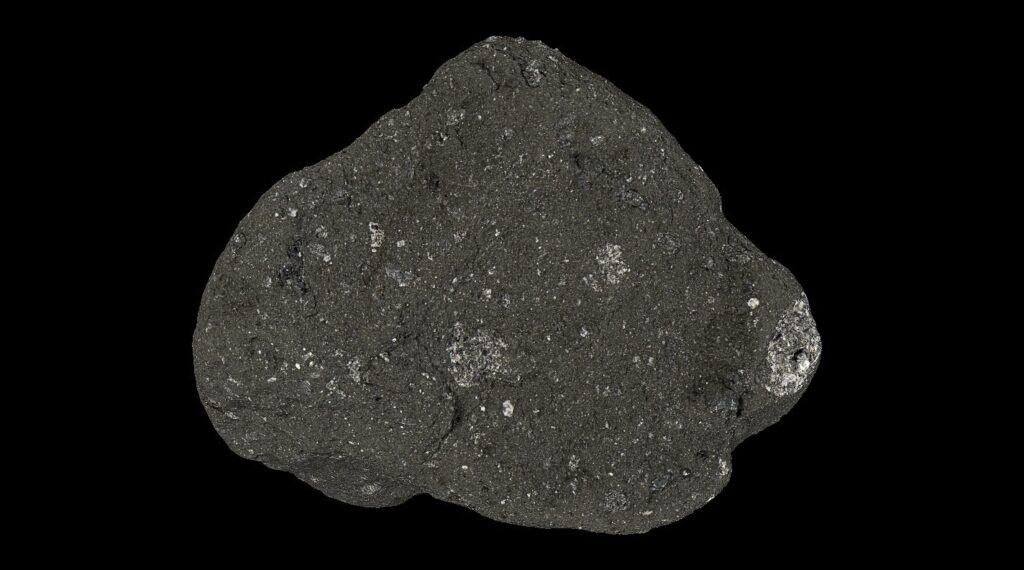
Because moon rocks can also be seen as proof that the Americans did not fake or falsify the moon landing - as conspiracy theorists keep claiming to this day. For the two superpowers USA and USSR, which faced each other in the Cold War, it would have been easy to expose the other. So already alone the official silence of the Russians could be seen as proof that the Americans were on the moon. Of course, there are many more points that can be used to prove manned moon landings.
UPDATE 2023: Restart des Luna-Programms
Für 2021 war ein Neustart des Luna-Programms geplant. Bis 2027 wollten Roskosmos und ESA gemeinsam insgesamt drei Missionen durchführen: Luna 25 (Start frühestens 2021), Luna 26 und Luna 27. Dabei sollte Luna 25 eine Art Vorauskommando sein, das auf dem Mond landen und wichtige Erkenntnisse für nachfolgende Missionen gewinnen soll. Zwei Jahre später soll Luna 26 starten, Fernmessungen durchführen und als Kommunikations-Relais im Mondorbit verbleiben. Luna 27 wird ein weiteres Jahr später starten, in der Südpol-Region des Mondes landen und dort mittels eines Bohrers nach (gefrorenem) Wasser suchen.
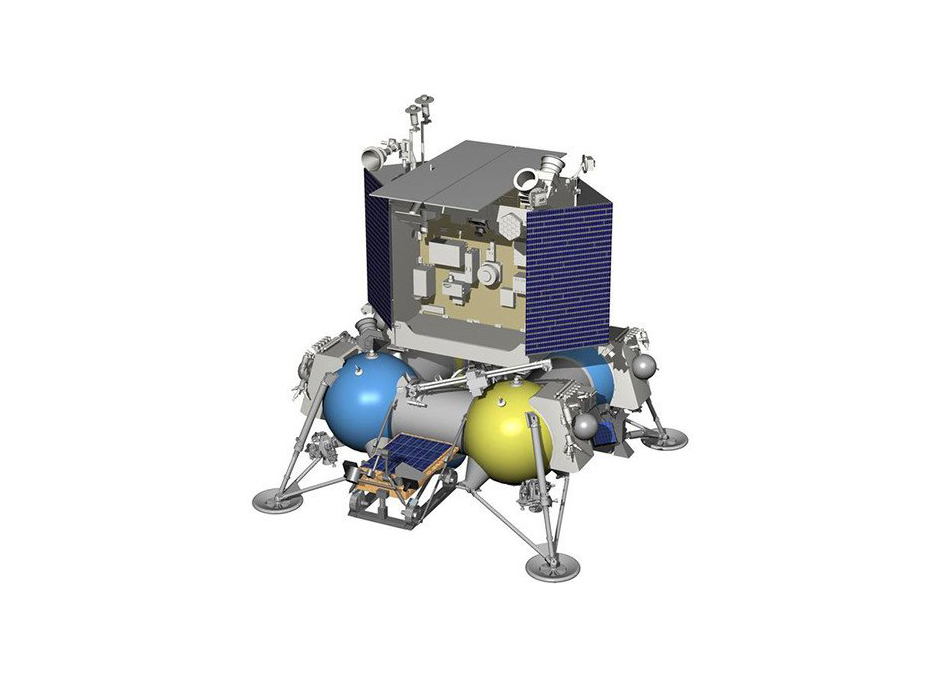
Der Start für Luna 25 erfolgte nach einigen Verzögerungen schließlich am 10. August 2023 (UTC). Die Landung auf der Oberfläche des Mondes war für den 23. August geplant. Aufgrund eines Fehlers stürzte die Sonde nach einem Bremsmanöver jedoch bereits am 19. August auf die Oberfläche. Die ESA hatte ihre Zusammenarbeit mit Roskosmos schon vor Beginn der Mission beendet. Der Grund hierfür ist der völkerrechtswidrige Angriffskrieg Russlands gegen die Ukraine, in Folge dessen bis auf die Kooperation auf der Internationalen Raumstation ISS sämtliche gemeinsamen Raumfahrtaktivitäten eingestellt wurden.
Luna (Луна)
Russland
- Typ: Sonde
- (Re-)Start: 11.08.2023
- Ende: 2027 (geplant)
- Dauer: 4 Jahre (geplant)
Zond (Зонд) - the probe
Verschleierung der russischen Ambitionen einer astronautischen Mondmission
The contents of the Zond program do not seem to follow any particular logic at first glance. Translated, Zond means probe, from which only limited deductions can be made. All in all, the program is considered to be very heterogeneous, since many missions were carried out under this name. Primarily, several probes of the same type were to be launched on different celestial bodies. But at least since the end of the Cold War it is known that Zond was also a program to cover up Russian efforts of a manned moon landing. Since this race was won by the Americans with the landing of Apollo 11 on July 20, 1969, Zond was discontinued in 1970 at the latest.

Zond (Зонд)
USSR
- Typ: Sonde
- Start: Nov 11, 1963
- Ende: Oct 20, 1970
- Dauer: 7 years
Successes and failures


Von Ebs08, CC BY-SA 3.0
The program is also considered a "reservoir of failed missions." For example, Zond 1 was sent on a journey to Venus on April 2, 1964, to drop a landing capsule that was supposed to hit the surface hard. However, due to a technical error, it flew past Venus on July 19, 1964, at a distance of 110,000 km.
Zond 2 was launched on November 30, 1964, and was supposed to fly past Mars, taking measurements and photographs. However, because a solar panel failed to deploy, the probe ran out of power, broke contact with Earth, and passed Mars on August 6, 1965, at a distance of only 1,500 km, without ever sending a signal again.
Zond 3 was also planned as a Mars probe. However, since the launch window was missed, the Russians changed their plans without further ado and sent it on its journey to the moon on July 18, 1965. It flew past it at a distance of only 9,200 km, tested a camera system and conducted experiments. After its flyby, it continued to send signals from interplanetary space (153.3 million km from Earth).
The Zond 4 to 8 probes were unmanned and returned to Earth after orbiting the Moon. Various approach and landing maneuvers were successfully tested.
Viking - the Vikings
Sonden auf dem Mars
Named after the Vikings who sailed to America well before Columbus, the Americans launched the Viking program in 1975. The goal of the two missions was to launch two probes on our outer neighboring planet. To accomplish this, two Titan 3E/Centaur rockets launched in quick succession from launch pad LC-41 at Cape Canaveral: Viking 1 on August 20, Viking 2 on September 9, 1975. According to the launch sequence, the two probes also reached Mars. The Viking 1 lander landed on July 20, 1976; Viking 2 touched down on the Red Planet on September 3, 1976.
The Viking probes were the first to provide detailed images of the Martian surface. In the immediate vicinity of Viking 2's landing site, Utopia Planitia (from the Greek for nowhere), the Chinese Mars probe Tianwen-1 is also scheduled to land at the end of May / beginning of June 2021 to investigate the water ice deposits found there in more detail. The Perseverance rover of NASA's Mars2020 mission already landed in the nearby Jerzero crater on February 18, 2021.

Viking
USA
- Typ: Sonde
- Start: 04.12.1968
- Ende: Nov 13, 1982
- Dauer: ~14 Jahre
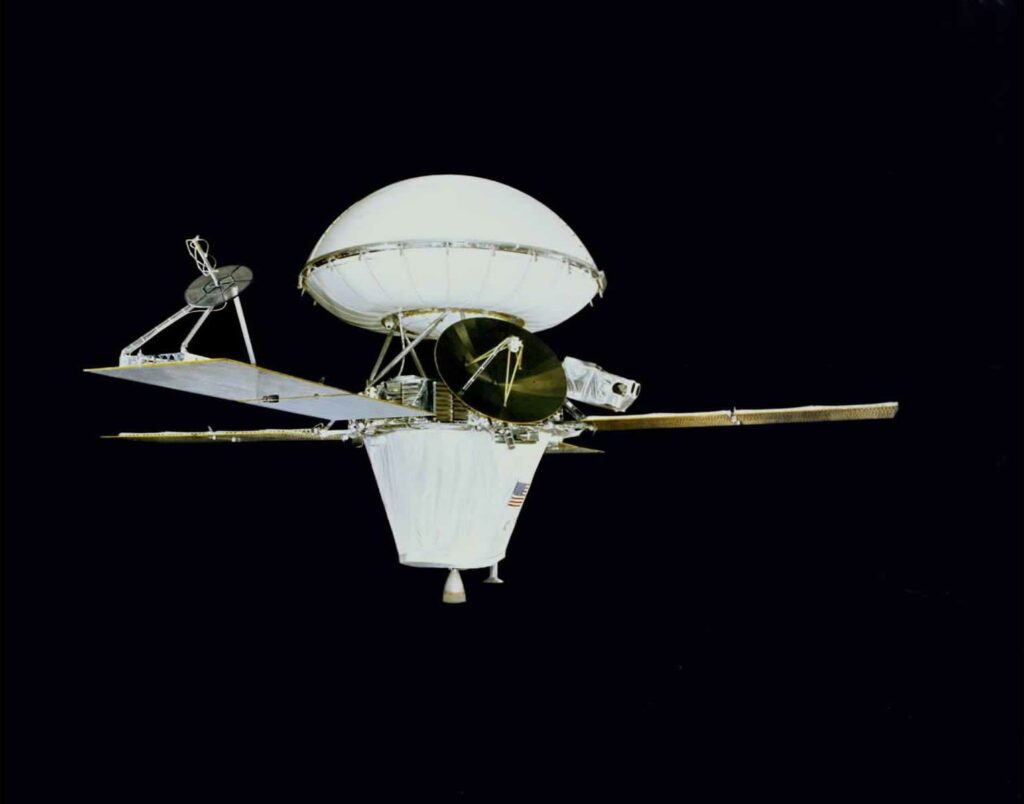
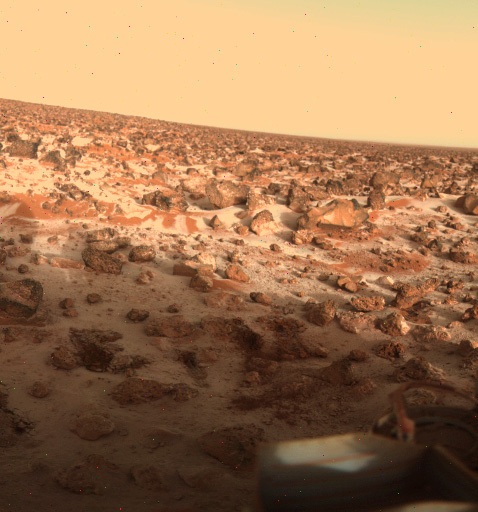

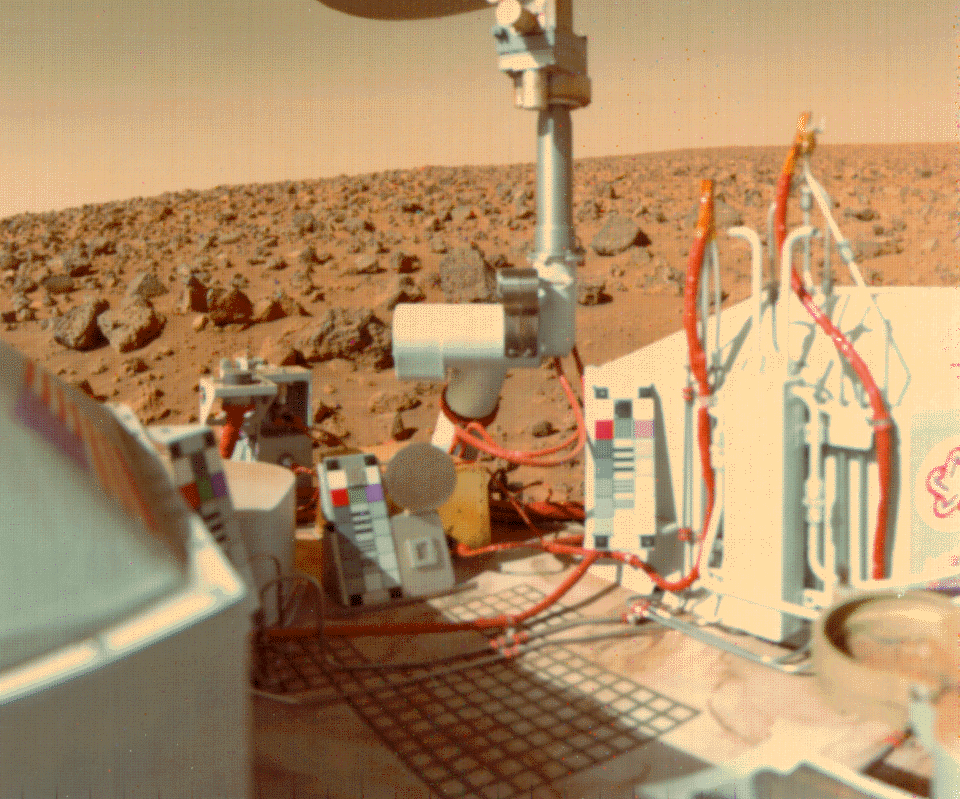
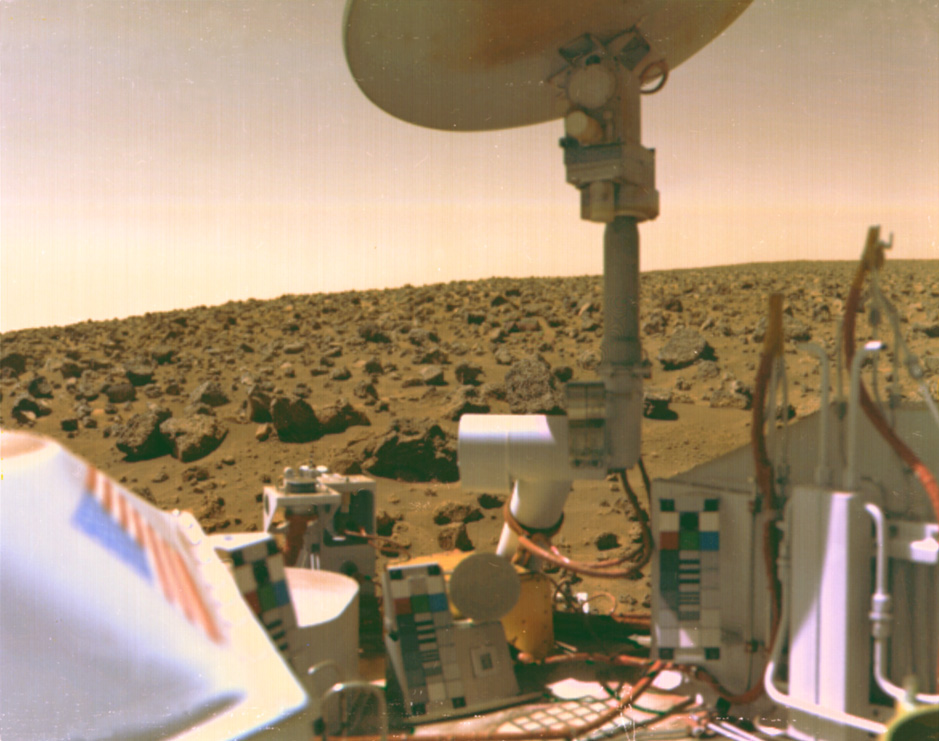
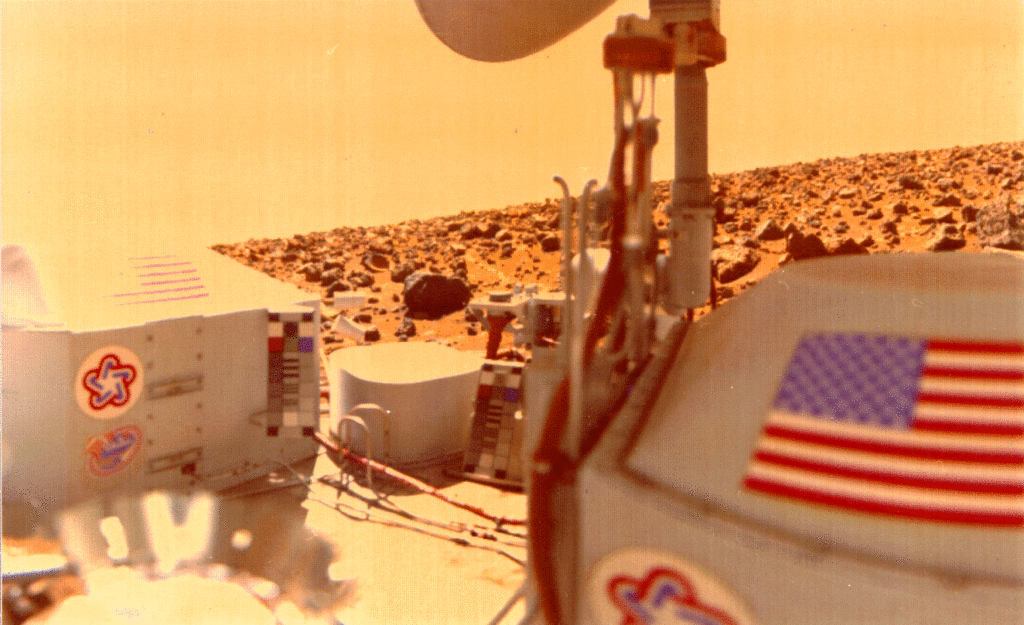

Contact with the probes was maintained for many years after their landing. Contact with the orbiter of Viking 1 was maintained until August 17, 1980, and with the lander until November 13, 1982. Contact with the orbiter of Viking 2 was maintained until July 25, 1978, and with the lander until April 11, 1980. The orbiters transmitted a total of 56,000 images (Viking 1: 37,000, Viking 2: 19,000) of Mars and its moons Phobos and Deimos; the landers each sent about 2,300 images of the surface to Earth.
Voyager - the travelers
Wissenschaft schlägt Politik
Voyager means "traveler" or "sailor". The first ideas for this program were already being considered in the 1960s. It was based on calculations by the U.S. mathematician Michael Minovitch of JPL (Jet Propulsion Labority). He had demonstrated that spacecraft could gain further speed through so-called swing-by maneuvers. This was extremely important for the program's goal of sending probes to the outer planets of our solar system. This was because the necessary planetary constellations occurred between 1976 and 1978, and not again until 2152.
NASA did not want to miss this opportunity and launched the Voyager program in July 1972. Voyager 1 set off on its journey from Cape Canaveral on September 5, 1977, and its sister probe Voyager 2 on August 20, 1977. Originally, four to five probes were to be launched, but due to the high budget involved, only two were to be built. Also the life span of the probes should be limited to four years, in order to save costs. However, the engineers secretly ignored this and used many of the already developed systems in the two probes Voyager 1 and Voyager 2.

Voyager
USA
- Typ: Sonde
- Start: Jul 1, 1972
- Ende: 2025/2030er (geplant)
- Dauer: 51+ Jahre
Travelling in interstellar space

This approach turned out to be a stroke of luck in the history of space flight. For, as NASA reports on its website, contact with the probes can be maintained to this day - thanks to improved technology. This is special in that they have now left our solar system. In August 2012, Voyager 1 and in November 2018, Voyager 2 entered interstellar space. This makes them the furthest man-made objects from Earth in existence.
On board the two probes are also the so-called Voyager Golden Records (VGR): copper records covered with gold. On it are stored beside the position information of the earth also greeting messages in 55 languages, music as well as nature and animal noises. The VGRs are intended as a message to extraterrestrials who may eventually discover the probes. How probable that is and whether that was a good idea, however, is another matter.
Cosmic Vision – die Visionären
Missionen zur Klärung grundlegender Fragen
Das aktuelle Raumfahrtprogramm der Europäischen Raumfahrtagentur ESA heißt Cosmic Vision 2015 – 2025. Der Name ist mit “Kosmischer Vision” nur bedingt gut zu übersetzen, letzten Endes geht es jedoch darum: Visionen. So stehen im Mittelpunkt des Programms auch vier Fragen, auf die langfristig Antworten gefunden werden sollen.
- Was sind die Bedingungen für die Planetenbildung und die Entstehung von Leben?
- Wie funktioniert das Sonnensystem?
- Welches sind die grundlegenden physikalischen Gesetze des Universums?
- Wie ist das Universum entstanden und woraus besteht es?
Cosmic Vision startete bereits 2005 und beinhaltet mehrere kleine Missionen, die eben erwähnte Fragen beantworten helfen sollen. Die Missionen innerhalb des Programms werden nach klein (S-Mission), mittel (M-Mission), groß (L-Mission) und schnell (F-Mission) gestaffelt.

Cosmic Vision
European Union
- Typ: Sonde
- Start: 2005
- Ende: N/A
- Dauer: 16+ Jahre
Comet Interceptor – der Abfangjäger für Kometen
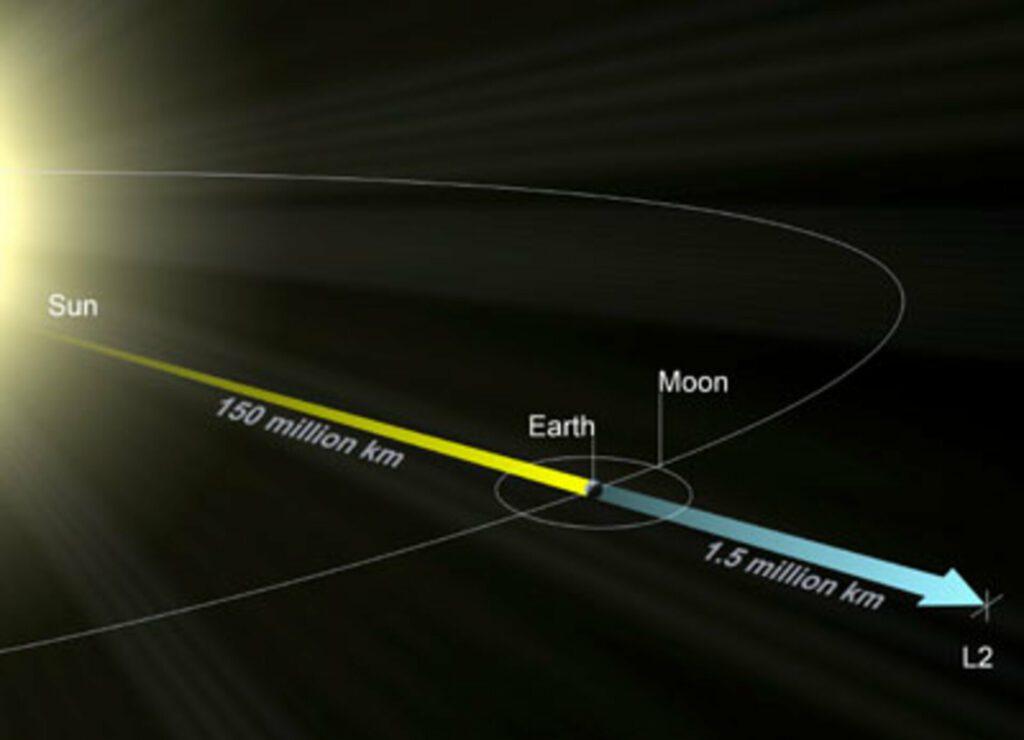
© ESA
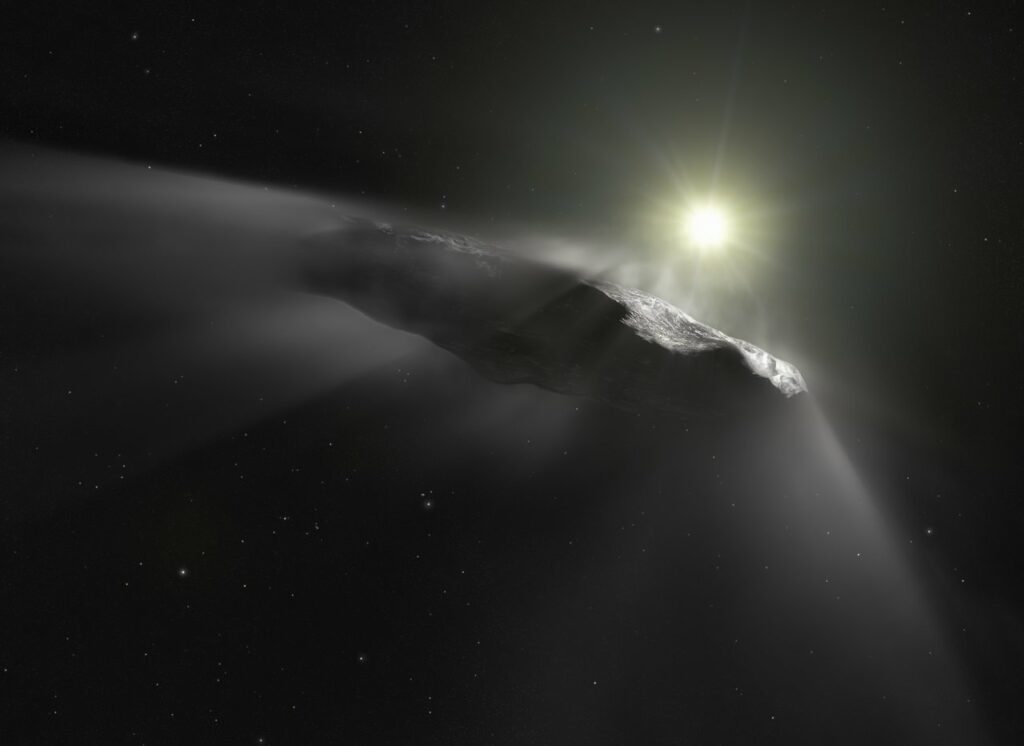
© ESA/Hubble, NASA, ESO, M. Kornmesser
Insgesamt zehn Missionen wurden nach Vorlage zur Realisierung ausgewählt, wovon besonders die F-Mission “Comet Interceptor” hervorsticht. Die geplante dreistufige Sonde soll 2029 starten und auf Abruf einen Kometen oder ein interstellares Objekt untersuchen. Besonders interessant ist diese Mission, da ihr Ansatz ein um 180° gedrehtes Vorgehen ist. Denn bisher wurde nach der Entdeckung eines interessantes Objektes die Technik gebaut und anschließend auf die Reise dahin geschickt. Nun aber soll erst die Technik gebaut, ins All gebracht und am Lagrange Punkt L2 (in rund 1,5 Millionen km Entfernung von der Erde) geparkt werden, wo die Raumsonde dann mehr oder minder “auf der Lauer liegt”, bis sie auf die Reise geschickt wird.
Tianwen (天问一号) – die Himmelsfragen
Marssonden Made in China
Tianwen ist ein Programm der chinesischen Raumfahrtagentur CNSA. Der Name geht auf den chinesischen Schriftsteller Qu Yuan zurück, der 340–278 v. Chr. gelebt hat. In einem Gedichtband stellte er die Astronomie seiner Zeit in Frage. Unter anderem, warum die Himmelsekliptik in 12 Abschnitte aufgeteilt ist. Antworten hat er jedoch nicht geliefert; das soll jetzt das Raumfahrtprogramm nachholen.
Dass zwischen dem Start des Programms im März 2007 bis zum erfolgreichen Start von Tianwen-1 am 23. Juli 2020 insgesamt 13 Jahre liegen, begründet sich im ersten Fehlschlag. Denn zunächst war vorgesehen, in Zusammenarbeit mit Roskosmos eine Sonde (Mars-1 (ursprünglich Yinghuo-1, dt. Glühwürmchen)) “Huckepack” auf der Phobos-Grunt-Mission zum Mars zu bringen. Aufgrund eines technischen Fehlers konnte die Sonde jedoch nicht in die Flugbahn zum Mars eingeschossen werden und verblieb in einer niedrigen Umlaufbahn – dem Parkorbit – um die Erde. Ohne die Möglichkeit, die Flugbahn von der Erde aus zu beeinflussen, näherte sich die Sonde immer weiter der Oberfläche an und trat letztlich in die Atmosphäre ein. Am 15. Januar 2012 verglühte Phobos-Grunt gemeinsam mit Yinghuo-1 über dem Ostpazifik.

Tianwen (天问一号)
VR China
- Typ: Sonde
- Start: 26.03.2007
- Ende: N/A
- Dauer: 14+ Jahre
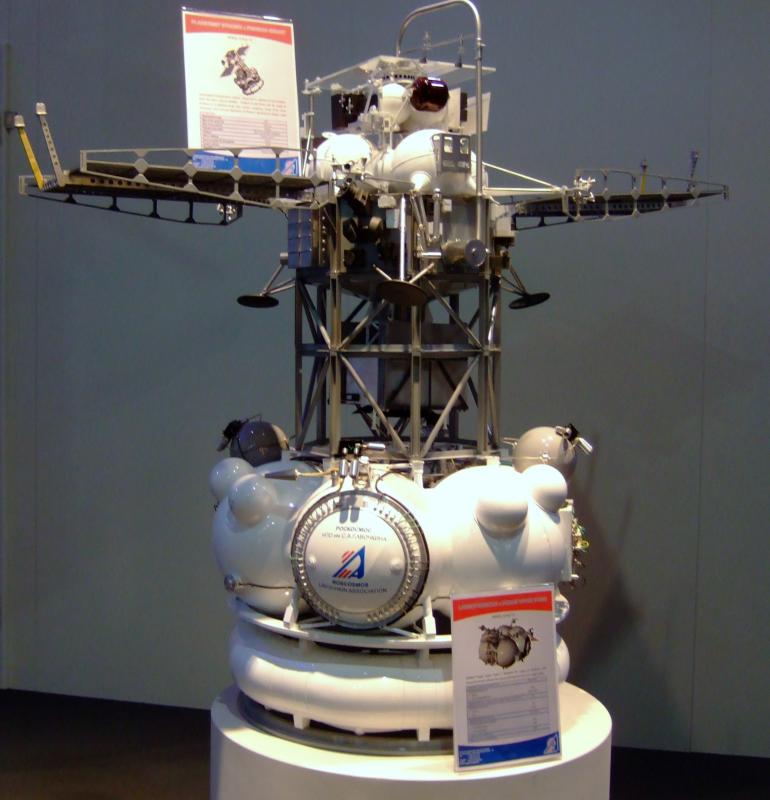
© MKonair – Flickr: Cebit 2011 I’m in orbit, CC BY-SA 2.0
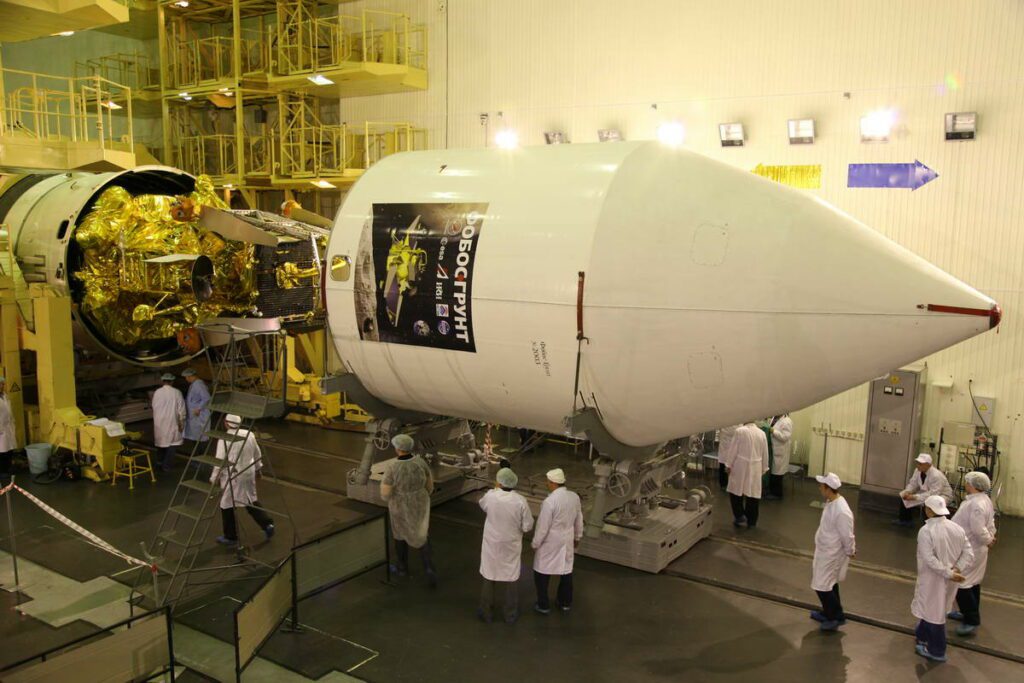
© Roskosmos
Die CNSA (China National Space Administration) beschloss daraufhin, ein eigenes Programm zu starten. Schließlich startete Tianwen-1 am 23. Juli 2020 mit einer Rakete des Typs Langer Marsch 5 in Richtung Mars und erreichte diesen am 10. Februar 2021. Für Mai 2021 ist dann eine Landung geplant, bei der ein Rover in der Größe eines Golfcaddys auf der Oberfläche abgesetzt wird. Dieser soll unter anderem nach vorhandenen Erzen suchen. Der Orbiter verbleibt in der Umlaufbahn und wird als Relaisstation zur Kommunikation genutzt.
Tiangong (天宫) – der Himmelspalast
Chinesischer Außenposten im All
Tiangong ist ein astronautisches Raumfahrtprogramm der VR China, das hierzulande jedoch relativ unbekannt sein dürfte. Der Name Tiangong bedeutet „Himmelspalast“, womit chinesische Raumstationen bezeichnet wurden. Erste Planungen für das Programm gab es bereits 1992, seit 1993 läuft es und es wurde auf der Expo 2000 in Hannover erstmals der Öffentlichkeit vorgestellt.
Tjangong 1 startete am 29. September 2011 in einen Erdorbit. Der Kontakt zur Raumstation ging allerdings am 2. April 2018 unerwartet verloren. Daraufhin kam zu einem ungeplanten Eintritt in die Erdatmosphäre und dem Absturz im Südpazifik. Tiangong 2 startete am 15. September 2016 und wurde am 19. Juli 2019 kontrolliert zum Absturz gebracht. Bei beiden Abstürzen waren die Raumstationen unbemannt. Die mit Tiangong 1 und 2 gemachten Erfahrungen sollen in die modulare chinesische Raumstation einfließen, welche ab Frühjahr 2021 aufgebaut werden soll. Die Fertigstellung ist für Ende 2022 geplant.

Tiangong (天宫)
VR China
- Typ: Space Station
- Start: 1993
- Ende: until today
- Dauer: 28+ Jahre
Eine Station, 152.640 Namen
Der Benennung der Raumstation ging eine große PR-Aktion voraus. So wurden alle rund 1,4 Milliarden Chines:innen im April 2011 aufgefordert, Namensvorschläge einzureichen. Aus den 152.640 Vorschlägen wurden 30 in die nächste Runde gewählt, über die dann rund 20 Millionen Chines:innen online über die Top 10 abstimmten. Anschließend wählte eine Kommission daraus den finalen Namen aus, der vom chinesischen Staatsrat genehmigt und am 31. Oktober 2013 vom Büro für bemannte Raumfahrt bekannt gegeben wurde. Lange hielt sich der Name “Himmelspalast” jedoch nicht, denn seit 2018 wird er nicht mehr für die gesamte Raumstation verwendet. Stattdessen lautet die offizielle Bezeichnung seither “modulare Raumstation”. Die einzelnen Module hingegen werden weiterhin beschreibend bezeichnet.
- Kernmodul: Tianhe – Himmlische Harmonie
- Wissenschaftsmodul: Wentian – Himmelsbefragung
- Weltraumteleskop: Xuntian – Himmelsdurchmusterung
- Transportraumschiff: Tianzhou – Himmelsschiff
Artemis – die Zwillingsschwester
“Going to the Moon to stay”
2019 startete die NASA das nach Apollo zweite Raumfahrtprogramm, das Menschen zum Mond bringen soll. Der Name Artemis lässt sich von Apollo ableiten, denn in der griechischen Mythologie ist Artemis die Zwillingsschwester von Apollon.
Geplant war die Landung des “nächsten Mannes und der ersten Frau” (Wortlaut NASA) auf dem Mond für das Jahr 2024. Dass dieser Termin gehalten werden kann, scheint aktuell unwahrscheinlich. Grund hierfür sind unter anderem Verzögerungen bei der Konstruktion der für die Reise geplanten Rakete Space Launch System (SLS). Aber auch das zur Verfügung stehende Budget reicht laut NASA nicht aus, um den ambitionierten Zeitplan einzuhalten. Ein großer Schritt, um den nächsten riesigen Sprung zu machen, war hingegen der erfolgreiche Test der vier RS-25-Triebwerke des SLS in einem so genannten Green Run Hot Fire Test am 18. März 2021.

Artemis
USA
- Typ: Raumflug
- Start: 03/2019
- Ende: until today
- Dauer: 4+ Jahre
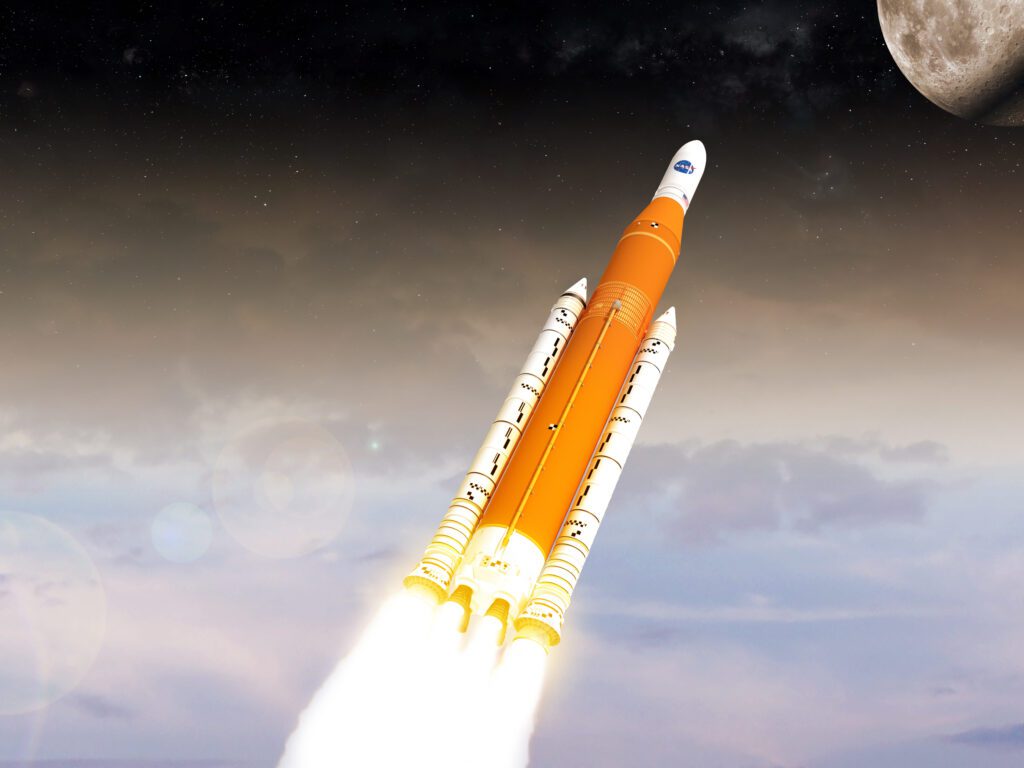

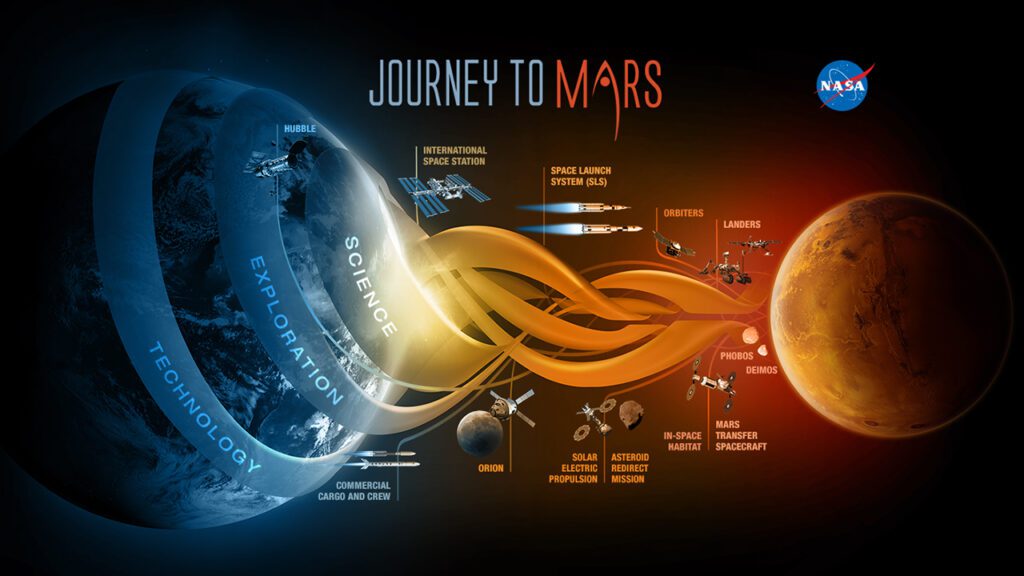
Ein Programm mit neuen Rekorden

Im Rahmen der Mission Artemis II soll auch ein von Apollo 13 aufgestellter Rekord gebrochen werden. Denn bei diesem bemannten Flug soll die Crew zwar nicht auf dem Mond landen, ihn aber umrunden. Aufgrund der Flugbahn wären die Besatzungsmitglieder dann die am weitesten von der Erde entfernten Menschen überhaupt. Geplant ist der Start (ursprünglich) für August 2023. Danach soll dann Artemis III wieder Menschen auf die Oberfläche des Mondes bringen.
Ausbeutung von Weltraumressourcen erlaubt – Dank Artemis Accords
Mit den Artemis Accords schloss die NASA einen Vertrag mit den Teilnehmerstaaten der Mission, welcher auf dem Weltraumvertrag aufbauen soll. Laut dieses Vertrages soll es Unternehmen gestattet sein, Weltraumressourcen auszubeuten – was der Weltraumvertrag eigentlich verbietet und Kritik auslöste. Zu den Unterzeichnern des Vertrags gehören neben den USA Australien, Großbritannien, Italien, Japan, Kanada, Luxemburg und die Vereinigten Arabischen Emirate.
Chandrayaan (च्हन्द्रयान) – das Mondfahrzeug
Indien auf dem Weg zum Mond
Chandrayaan, was sich als Mondfahrzeug übersetzen lässt, ist ein indisches Raumfahrtprogramm, in dessen Zentrum die Erkundung des Mondes steht. Im Ausland ist es auch unter dem Namen Indian Lunar Exploration Programme bekannt. Eine erste Mission startete 22. Oktober 2008 und brachte eine Sonde zum Mond, die ihn zwei Jahre lang umkreisen sollte. Der Kontakt brach allerdings nach 312 Tagen und mehr als 3.400 Umrundungen ab. Im Jahr 2017 gab die NASA bekannt, dass sie durch die Kooperation mehrerer Radioteleskope die Sonde wieder gefunden hat und diese sich in einem Mondorbit befindet.
Am 22. Juli 2019 startete Chandrayaan 2, deren Missionsziel die weiche Landung eines Landers auf der Oberfläche war. Allerdings schlug dieses Vorhaben fehl und der Lander wurde bei der Landung zerstört. Der Orbiter umkreist hingegen – wie Chandrayaan 1 – weiterhin den Mond. Aktuell konzentriert sich die ISRO jedoch auf das – durch die Corona-Pandemie zusätzlich verschobene – Indian Human Spaceflight Programme, das 2022/23 erstmals Inder:innen mit eigens entwickelter Technik ins All bringen soll.
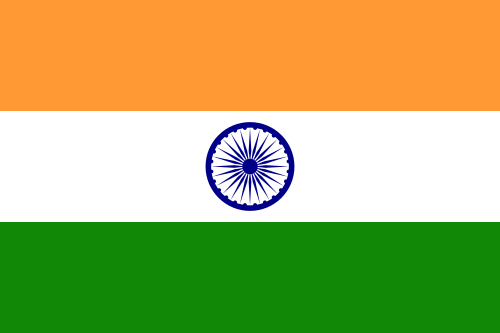
Chandrayaan (च्हन्द्रयान)
Indien
- Typ: Sonde
- Start: 2008
- Ende: until today
- Dauer: 15+ Jahre
Was Namen in der Raumfahrt bedeuten – eine Erkenntnis
Die vorgestellten Namen sind natürlich nur ein Bruchteil der Raumfahrt. Neben Programmen werden auch Missionen, Technik, Raumfahrzeuge, Raketen, Weltraumteleskope und so weiter mit Namen versehen. Das gilt für staatliche Raumfahrtprogramme ebenso, wie für die von Privatunternehmen wir SpaceX, Blue Origin oder Virgin Galactic. Was sich anhand der Beispiele jedoch erkennen lässt: Namen werden nicht per Zufall vergeben. Manche mögen seltsam, antiquiert oder auch zu bedeutungsschwanger wirken. Doch mit der Namensgebung soll in nahezu allen Fällen auch eine Botschaft transportiert werden. Zum Beispiel, um einen Anspruch gegenüber anderen klar zu machen. Zudem kann man oftmals anhand des Namens ablesen, welches Ziel mit einem Programm verfolgt werden soll. So lassen sich mit ein wenig detektivischem Geschick auch Rückschlüsse bei Programmen ziehen, die einem bislang unbekannt sind.

